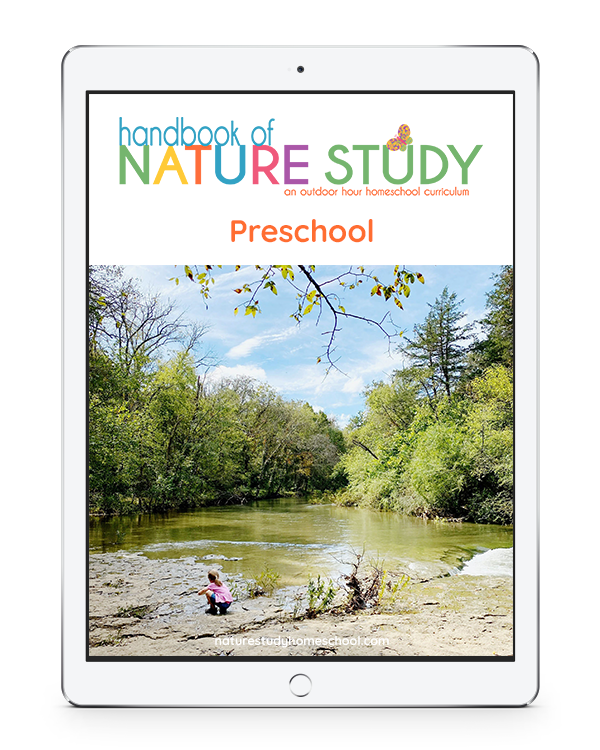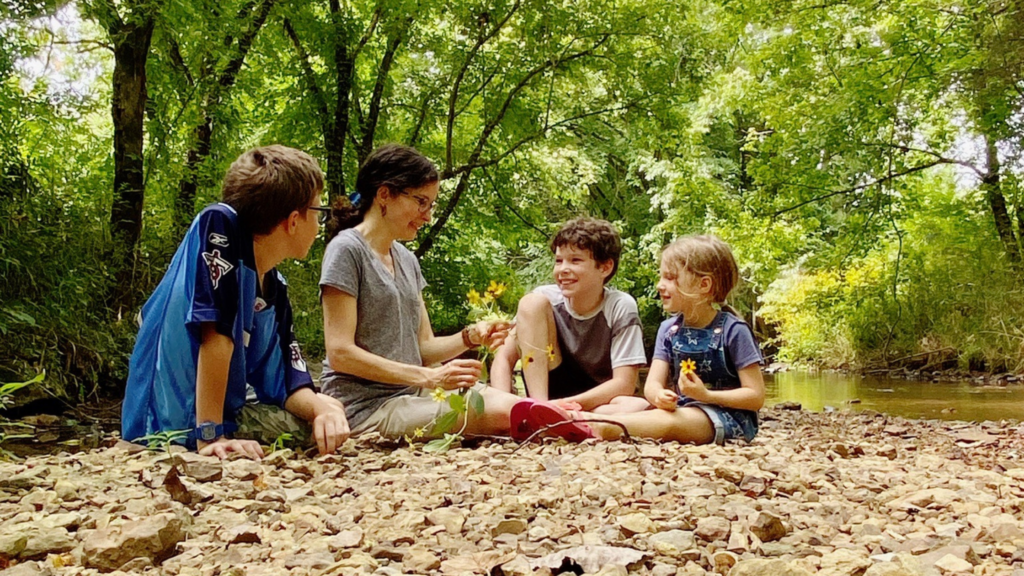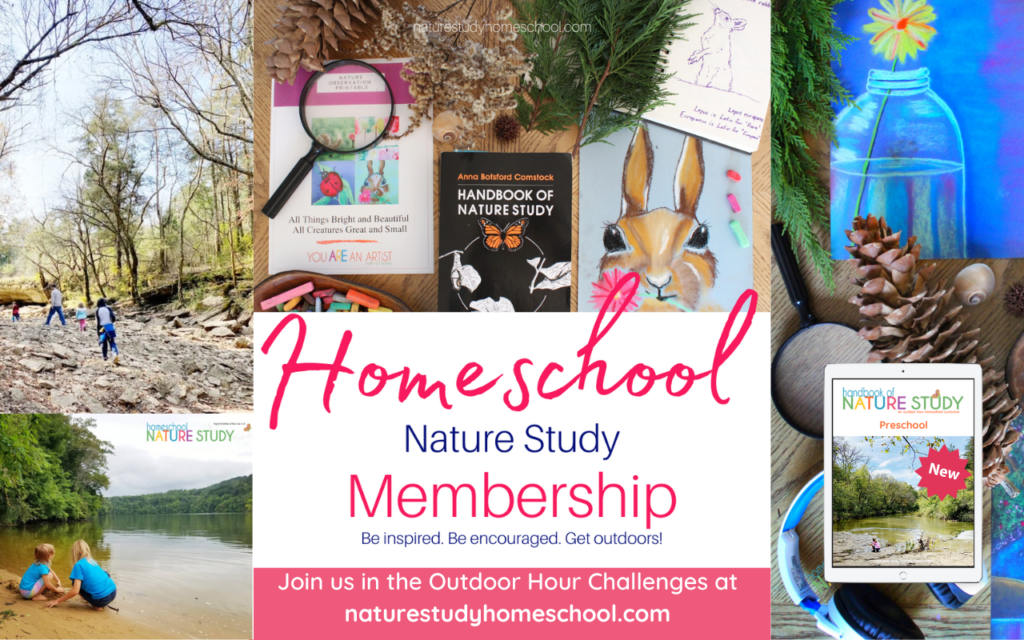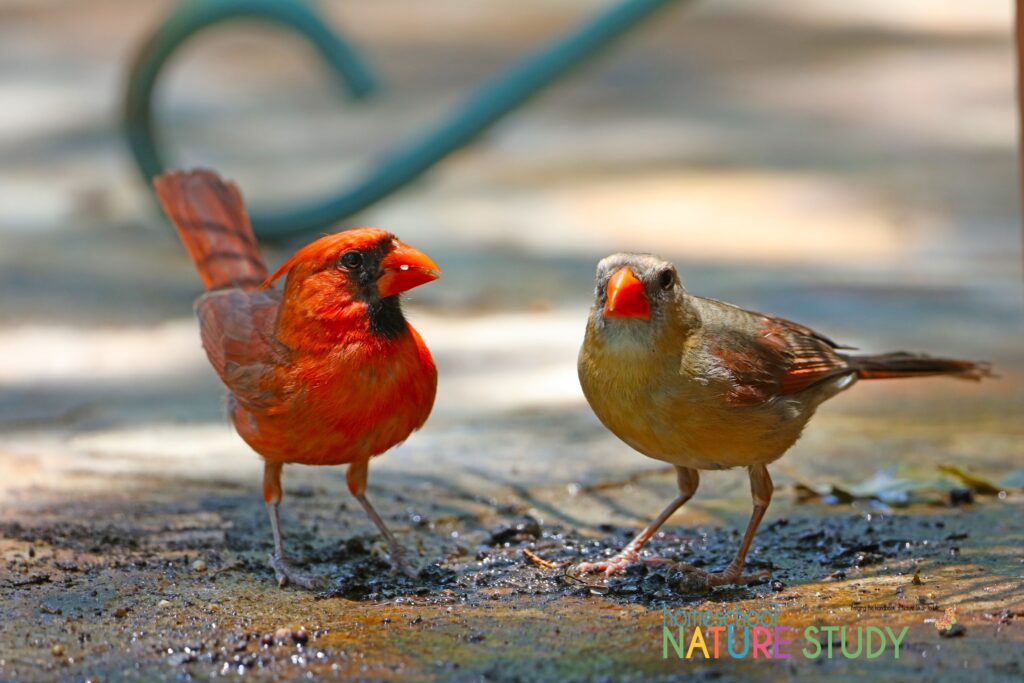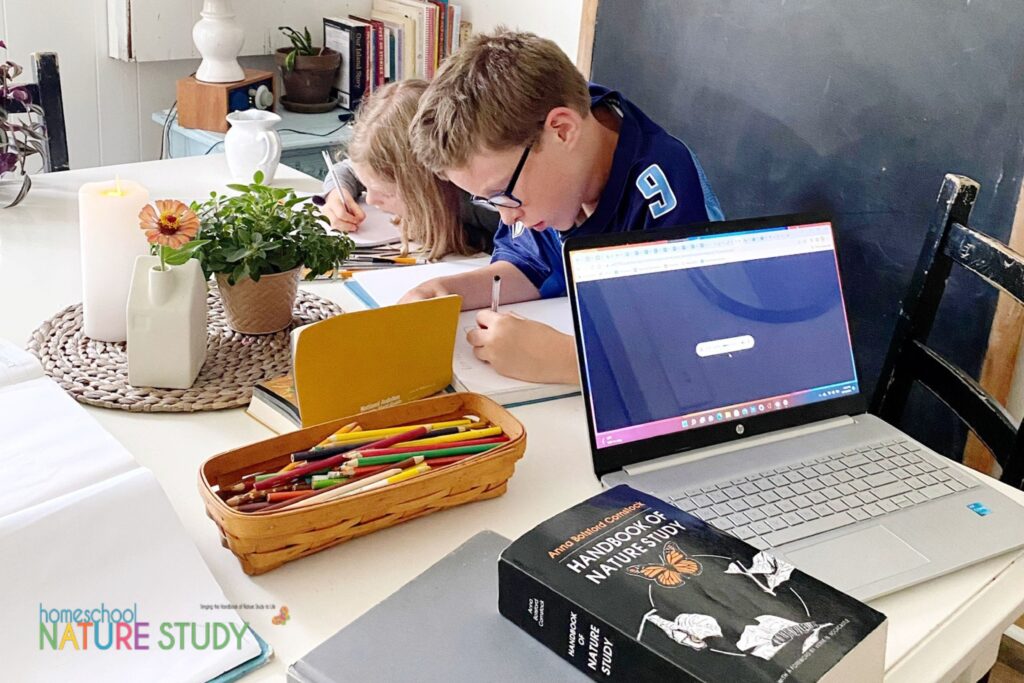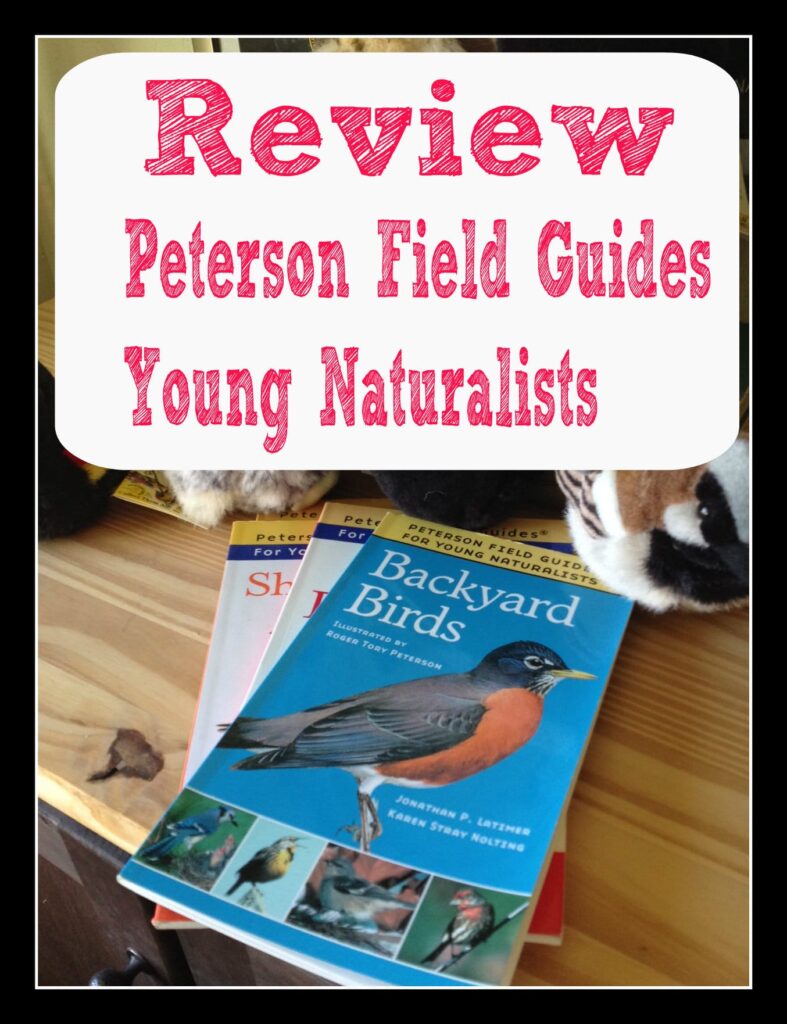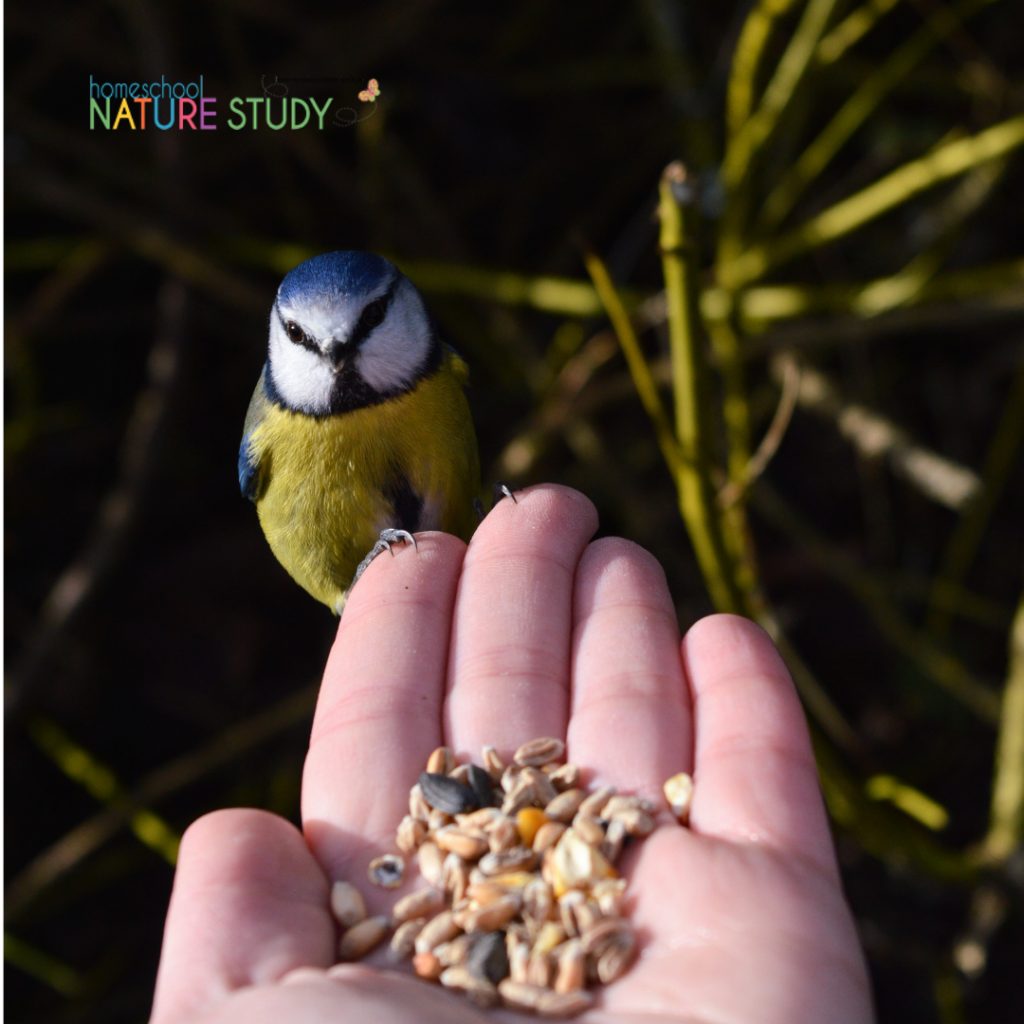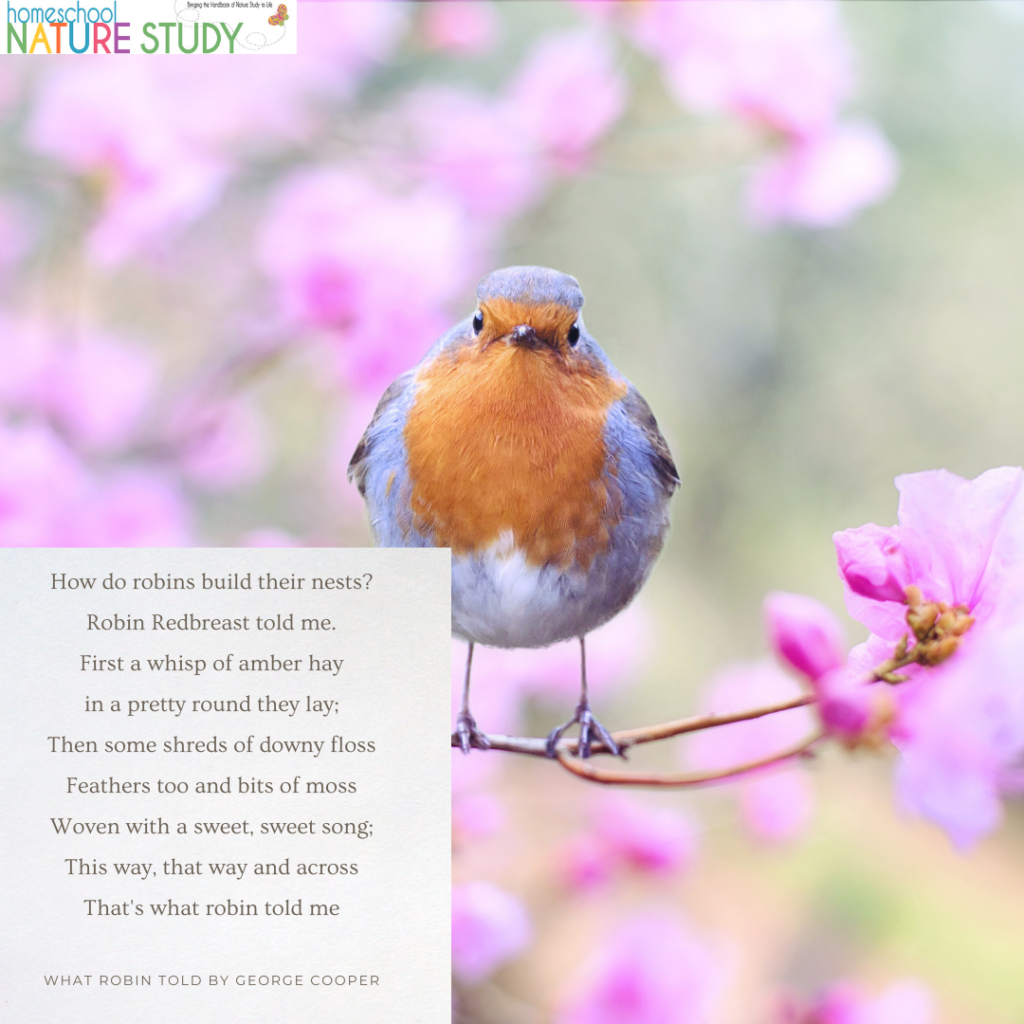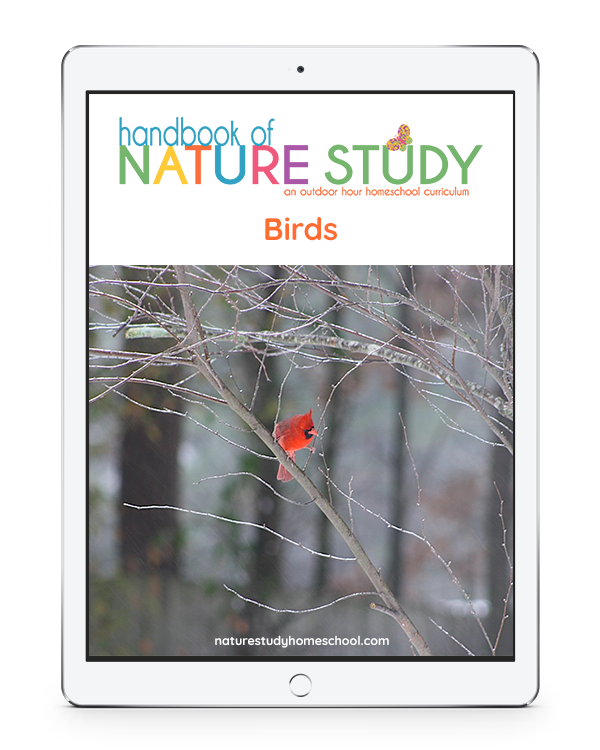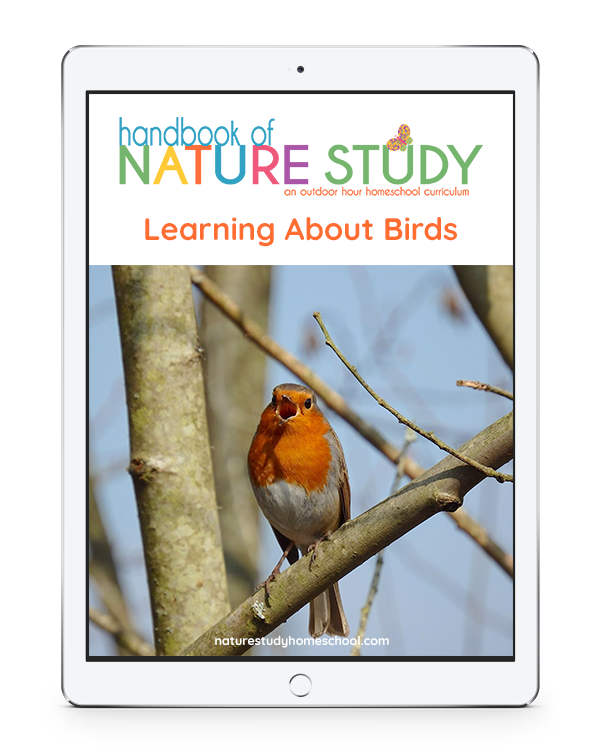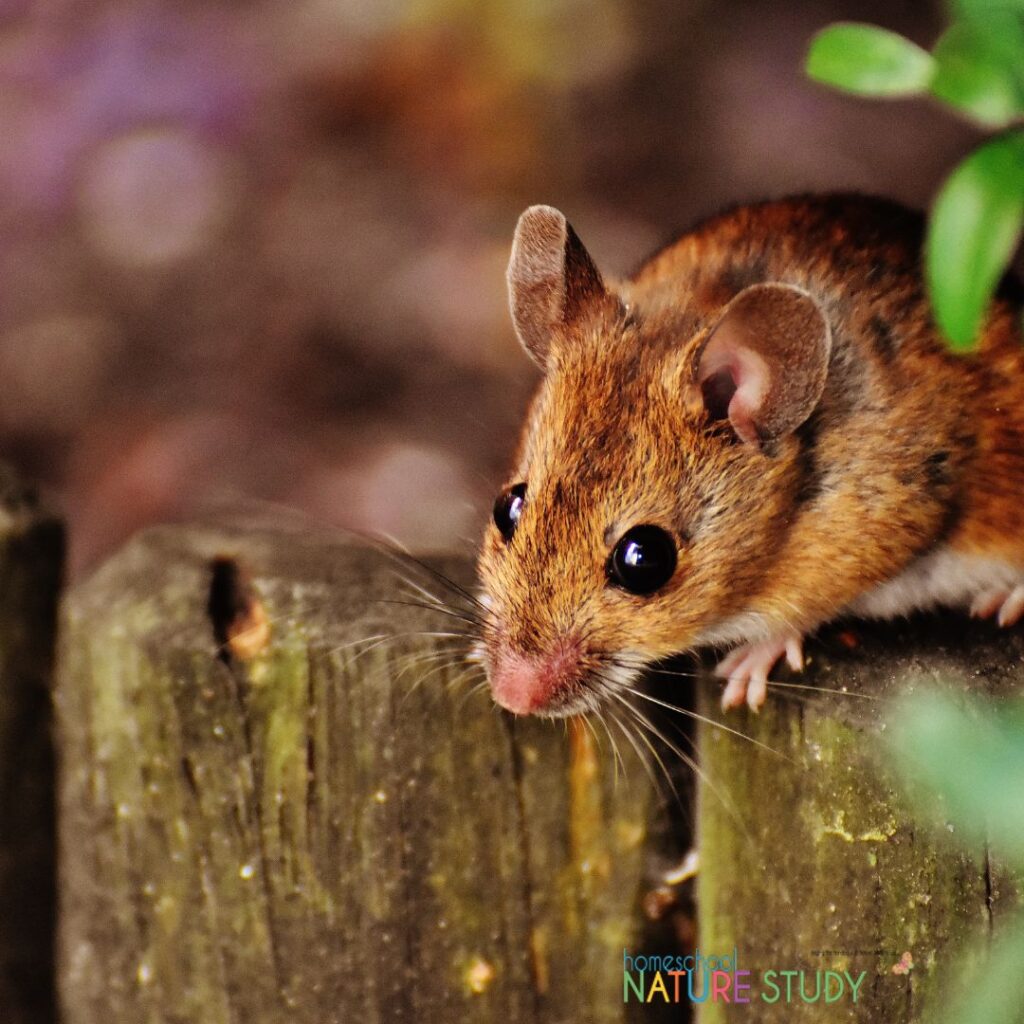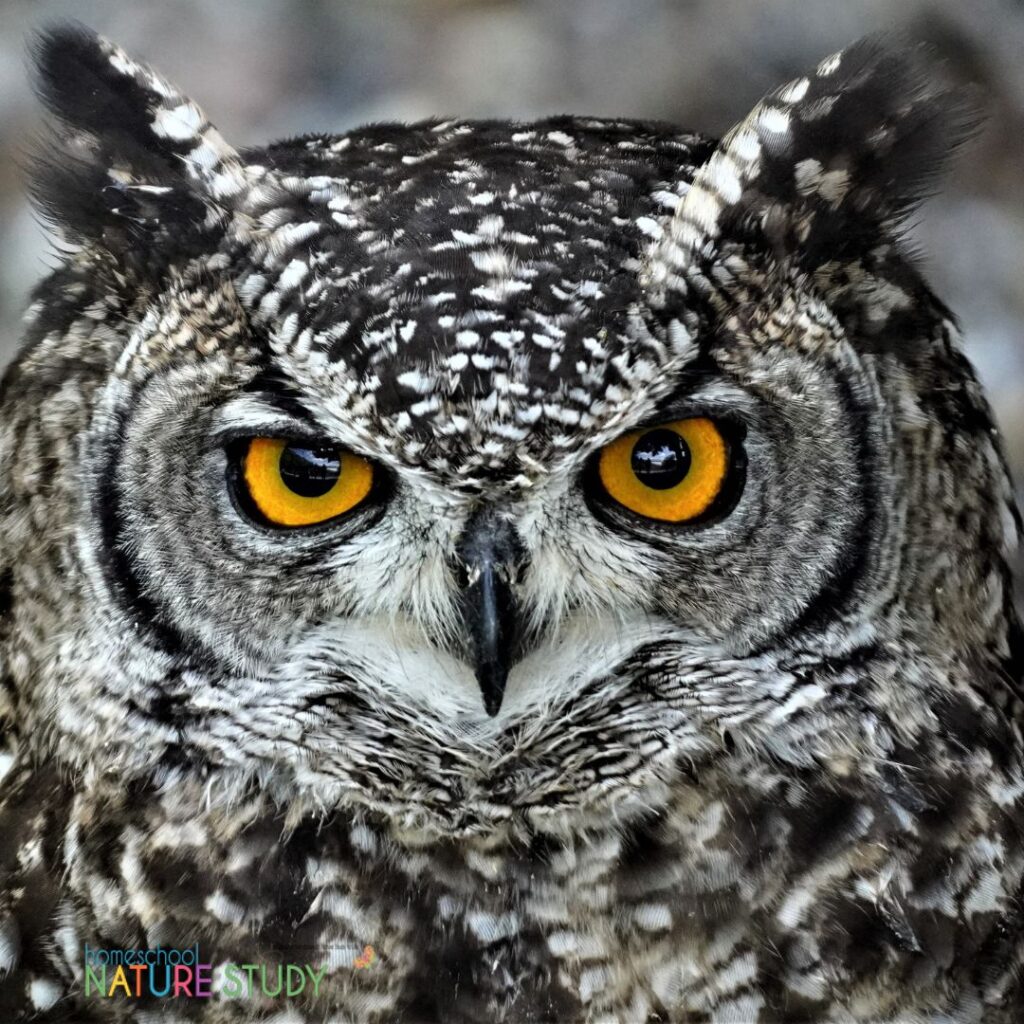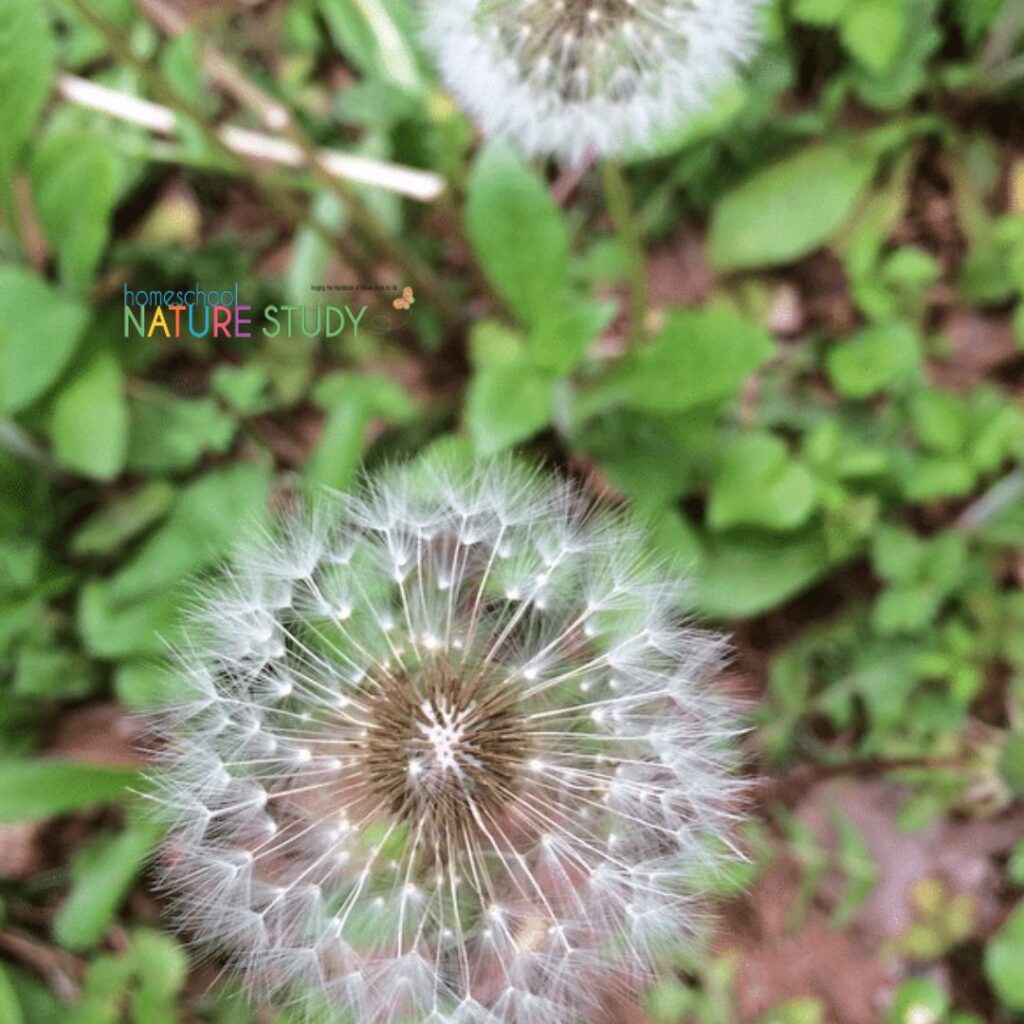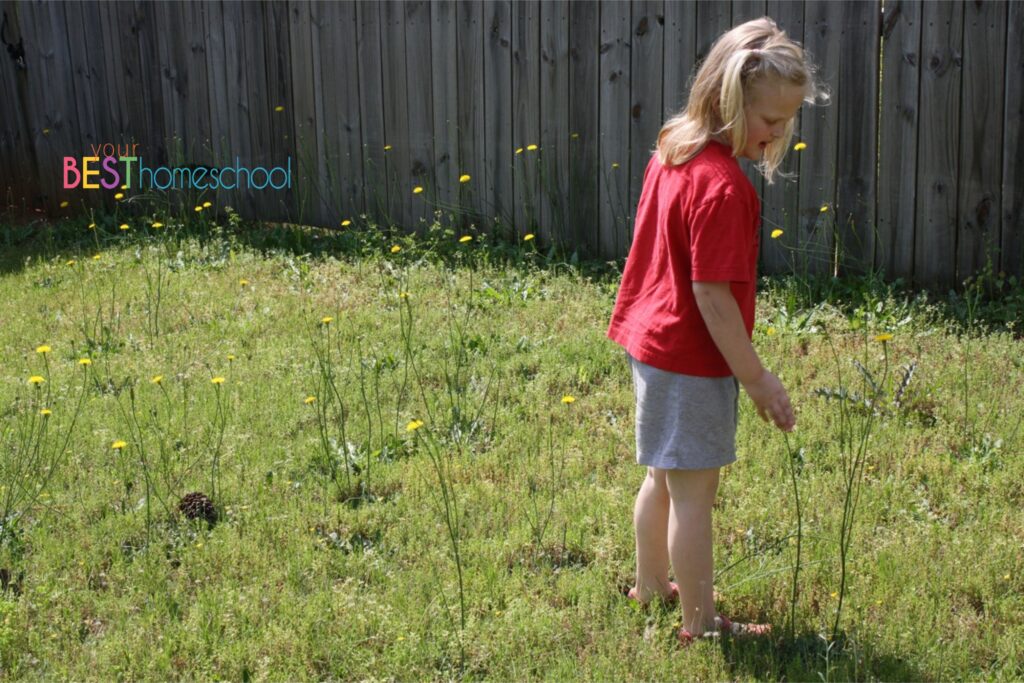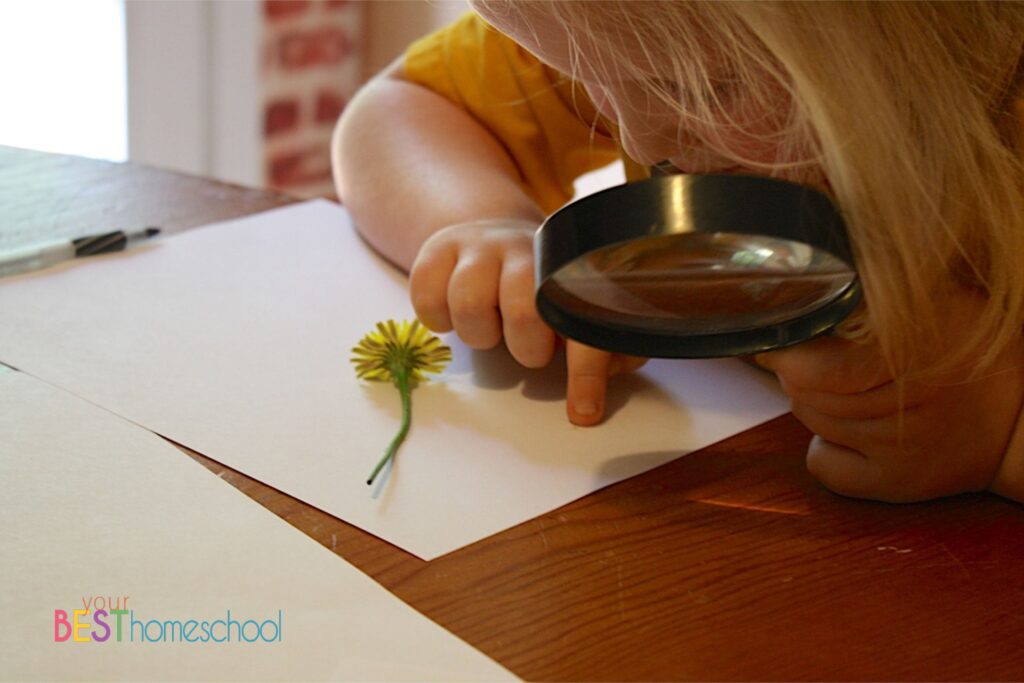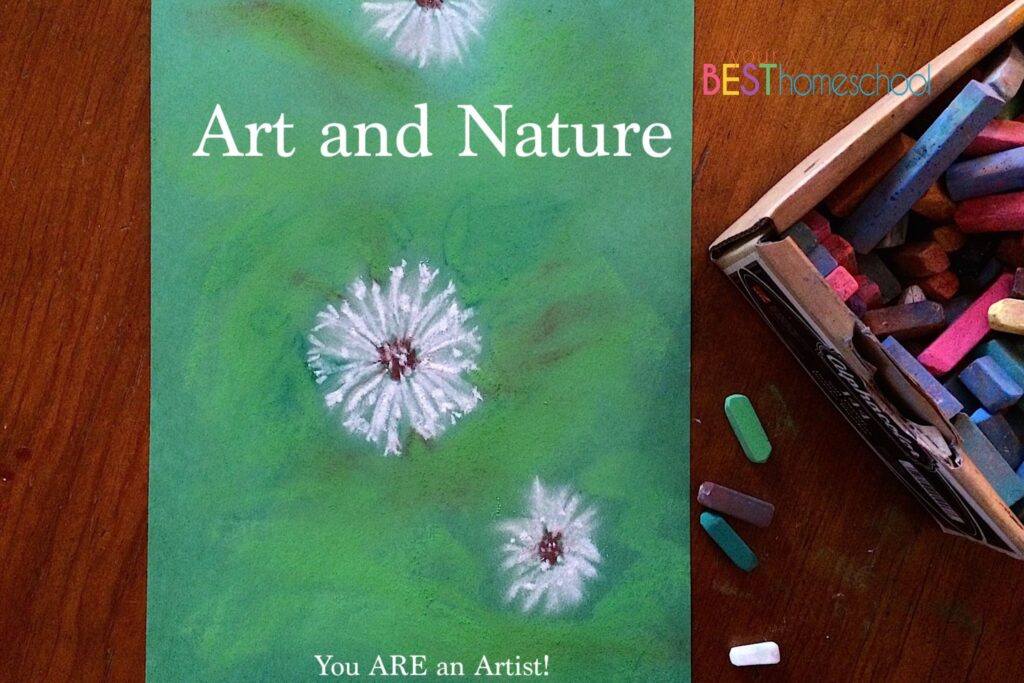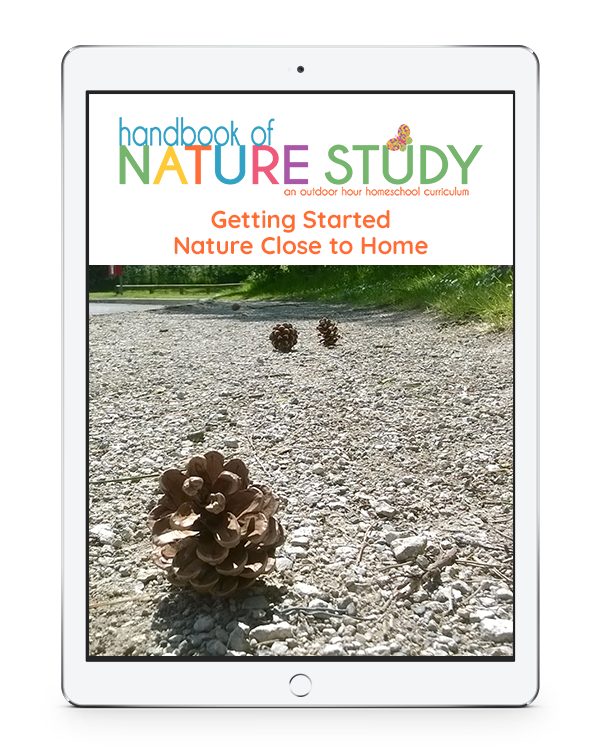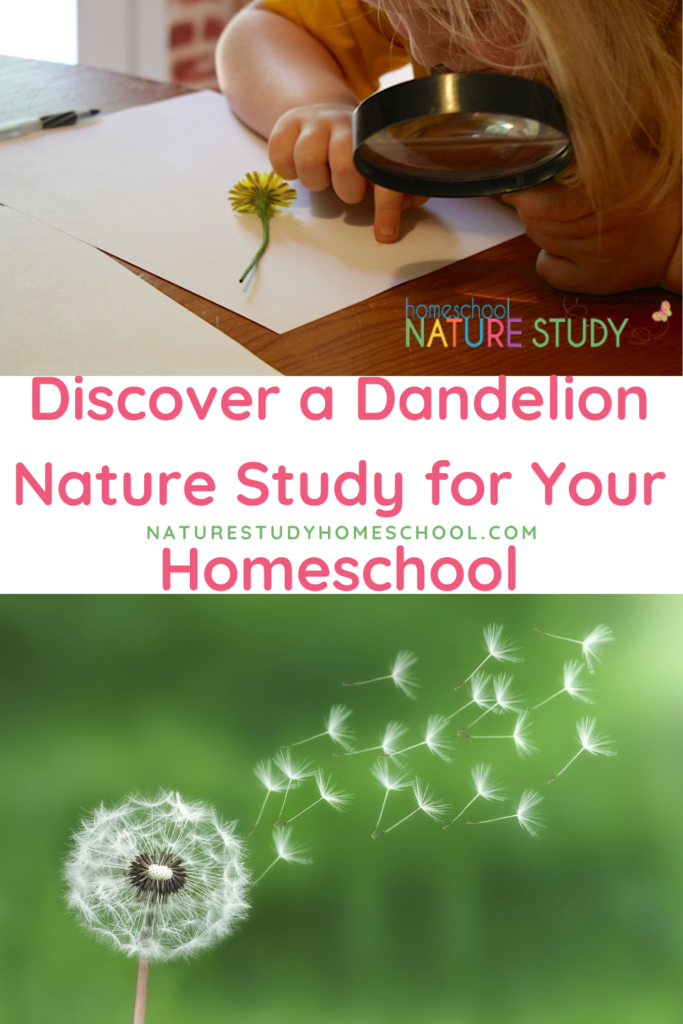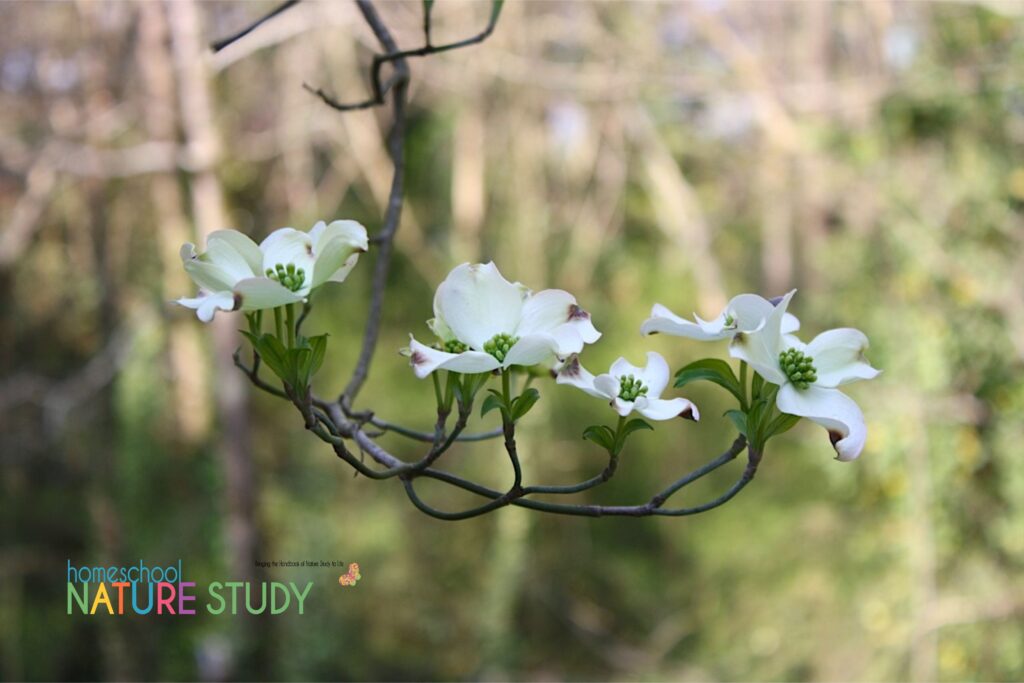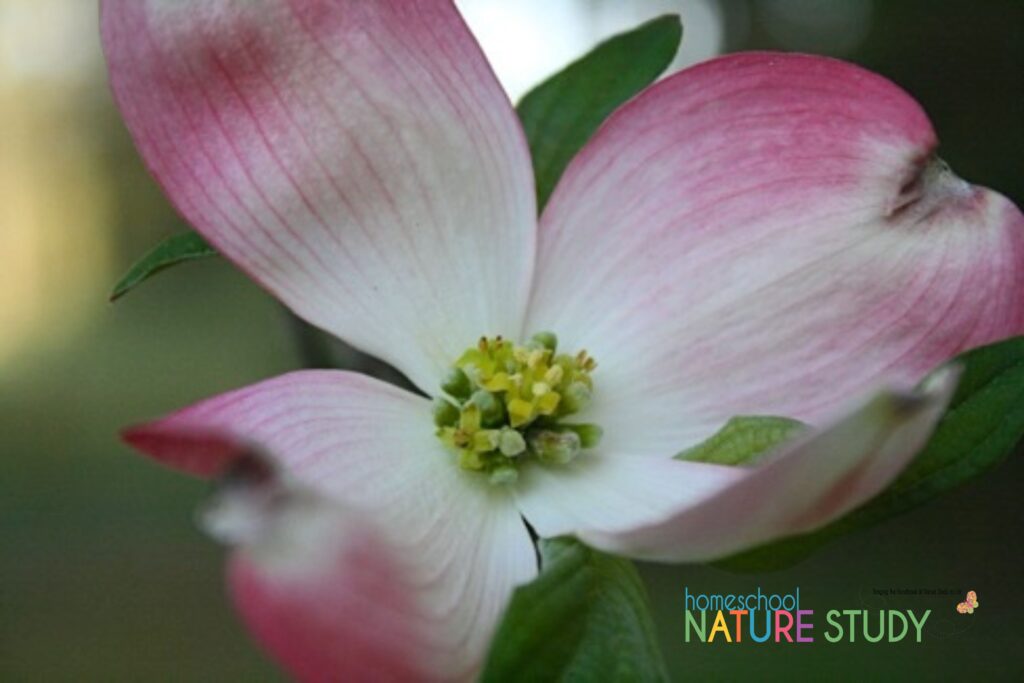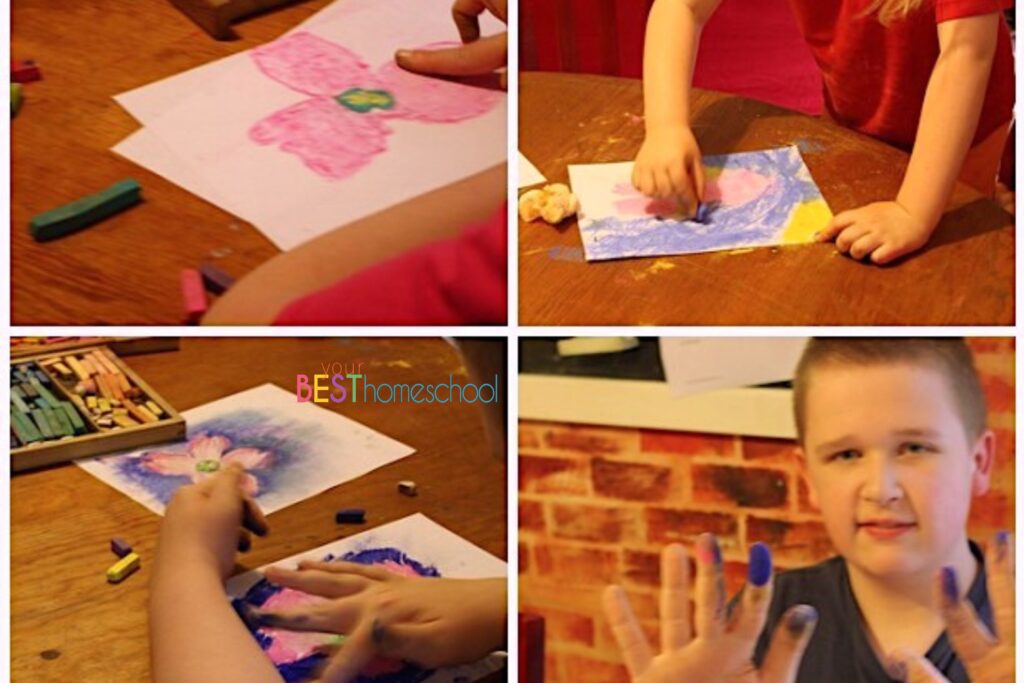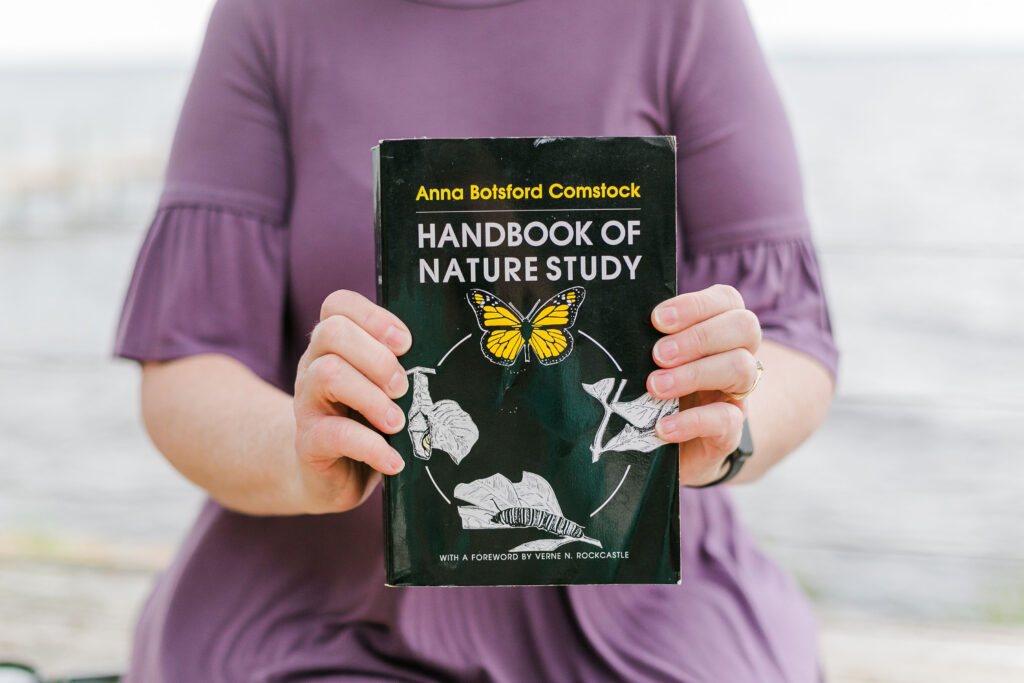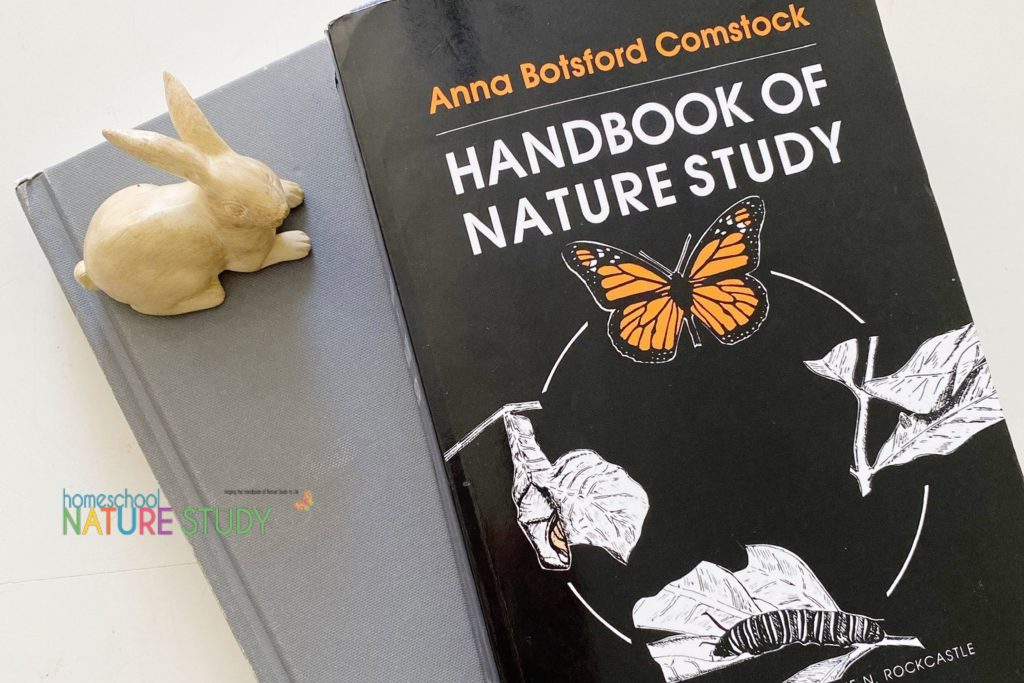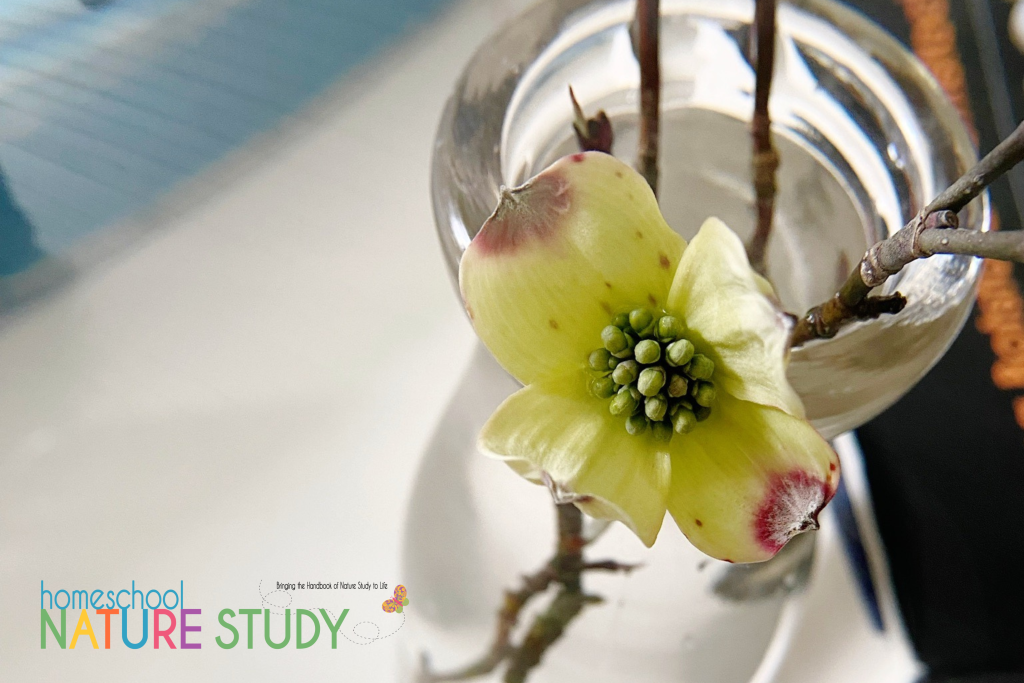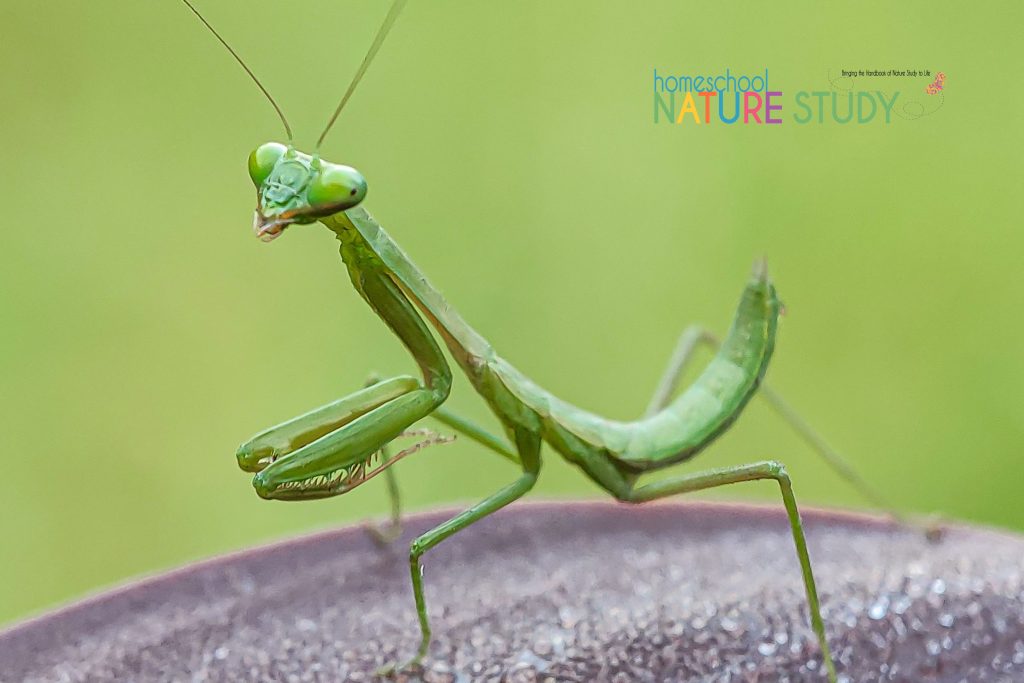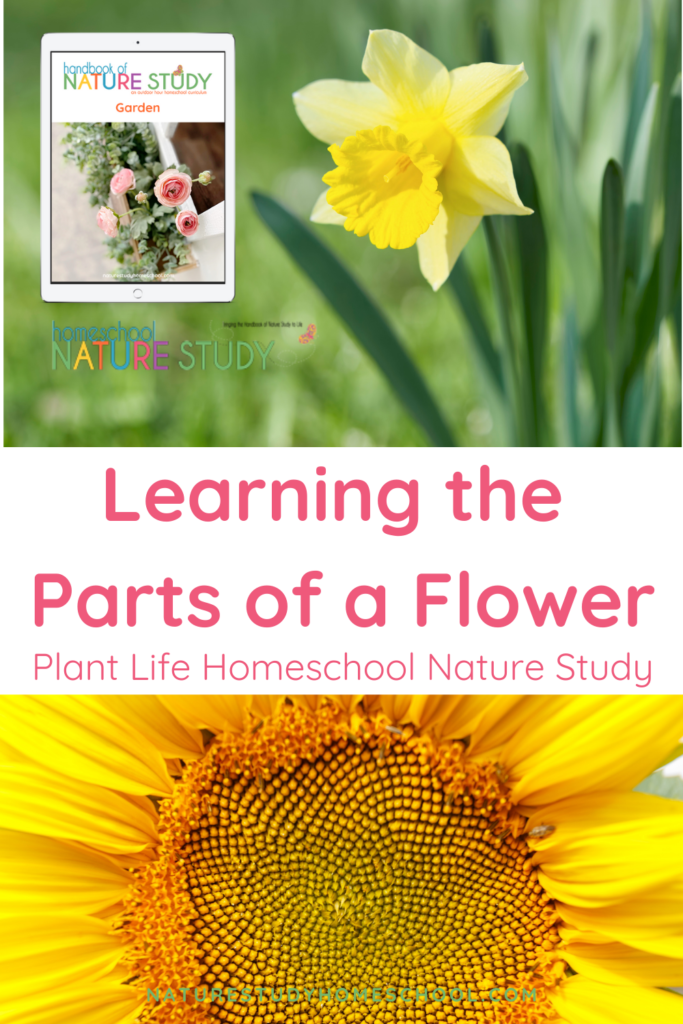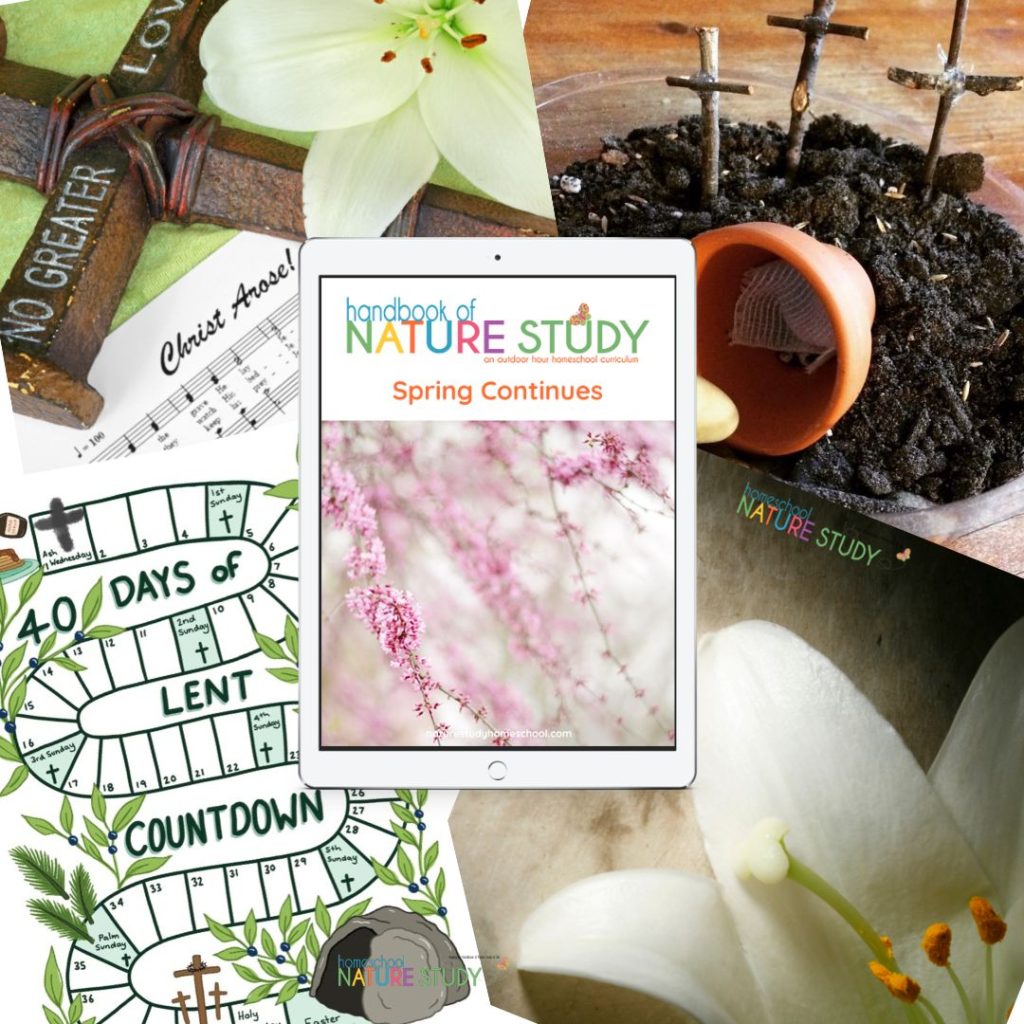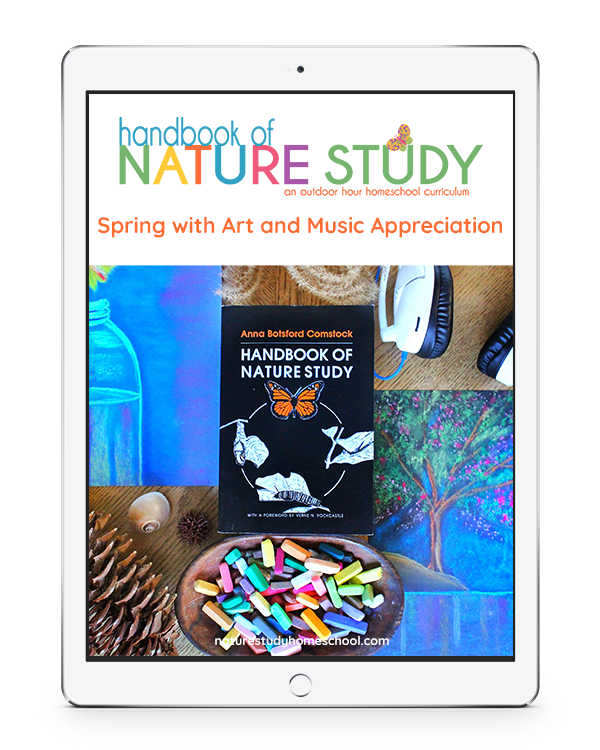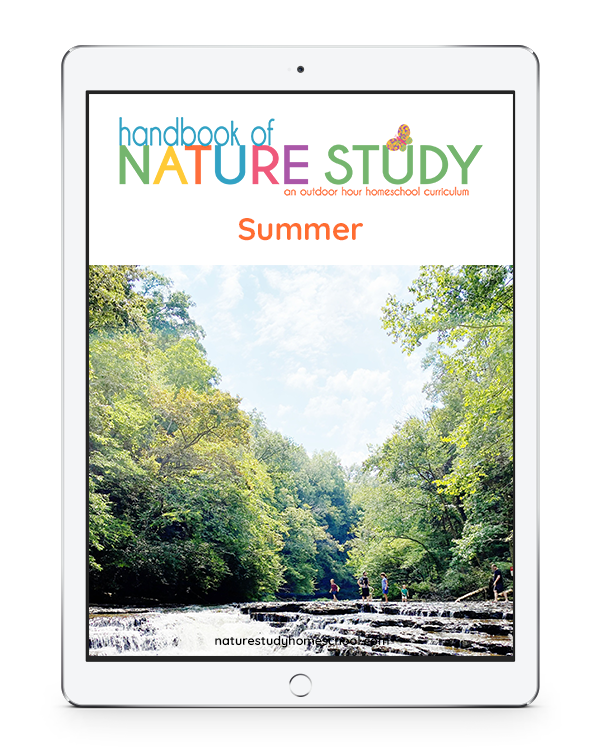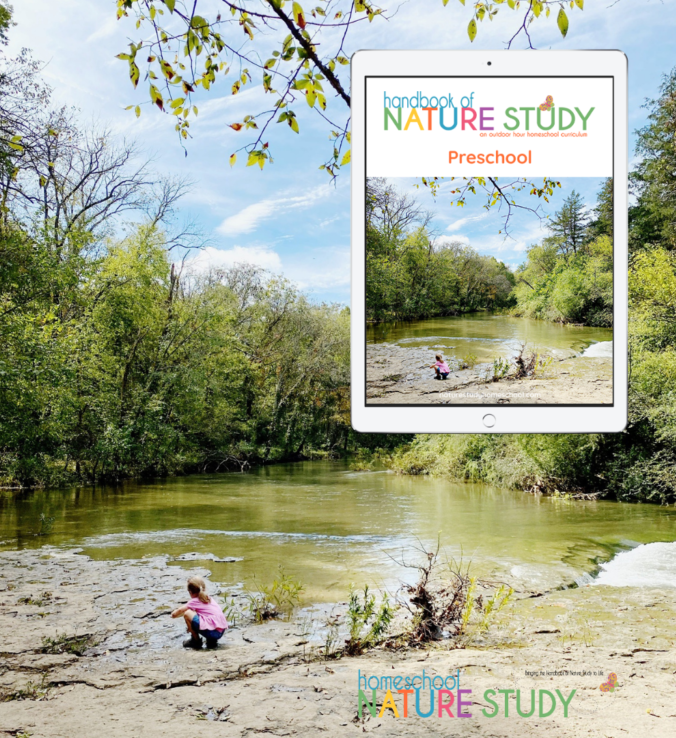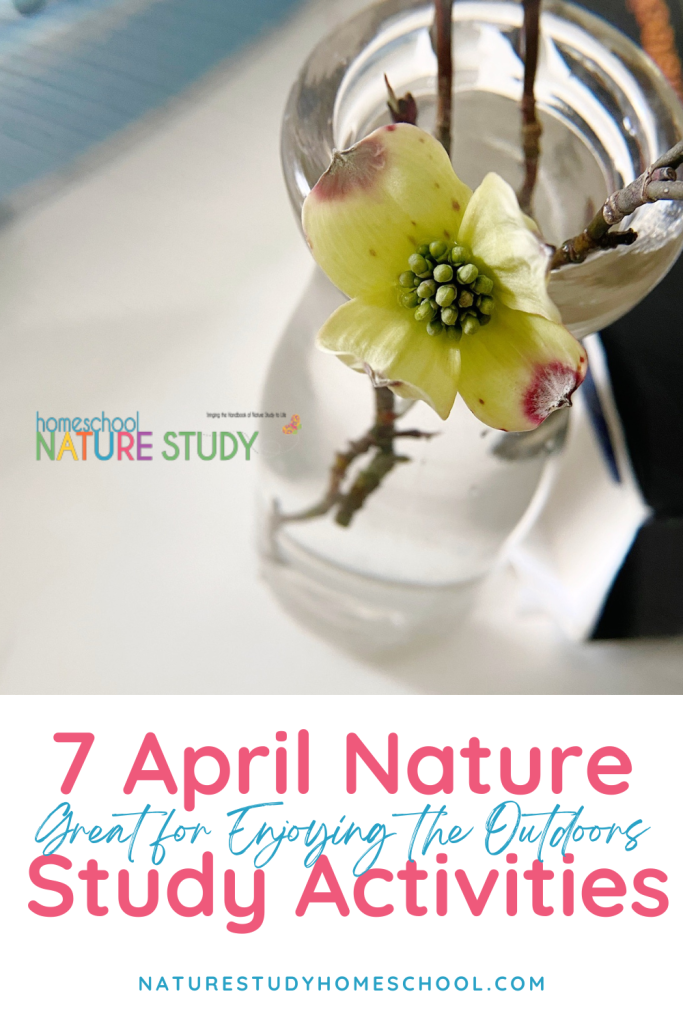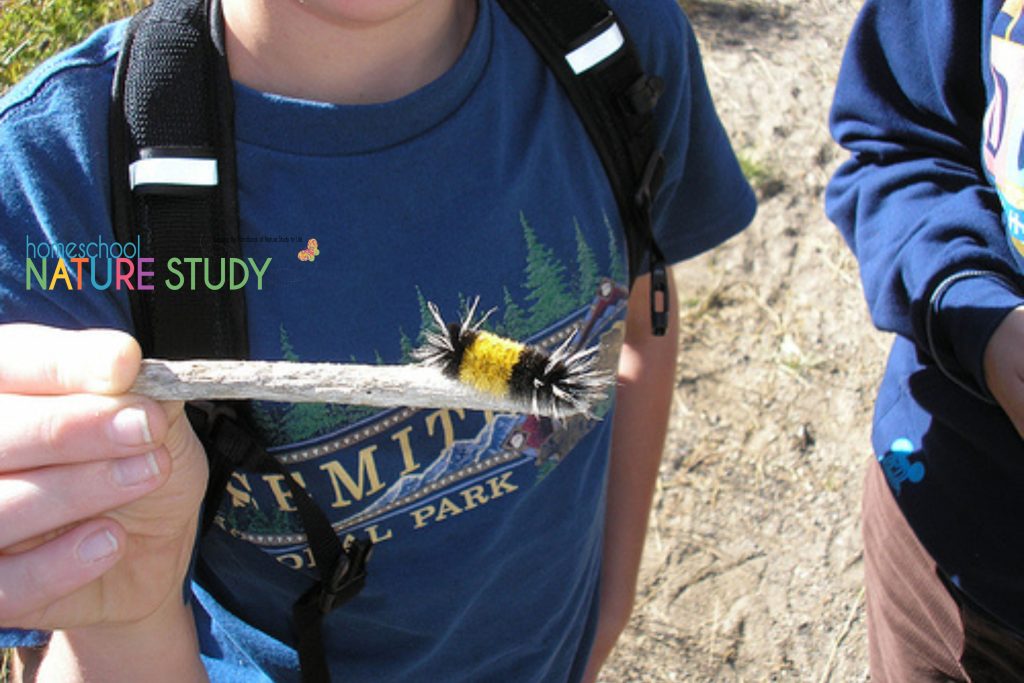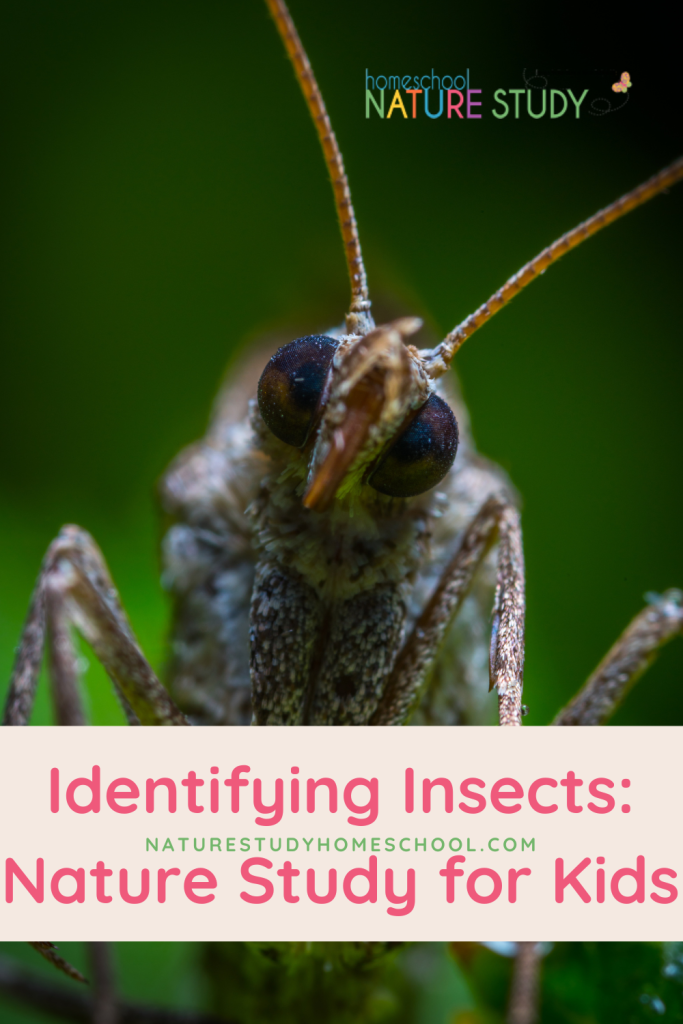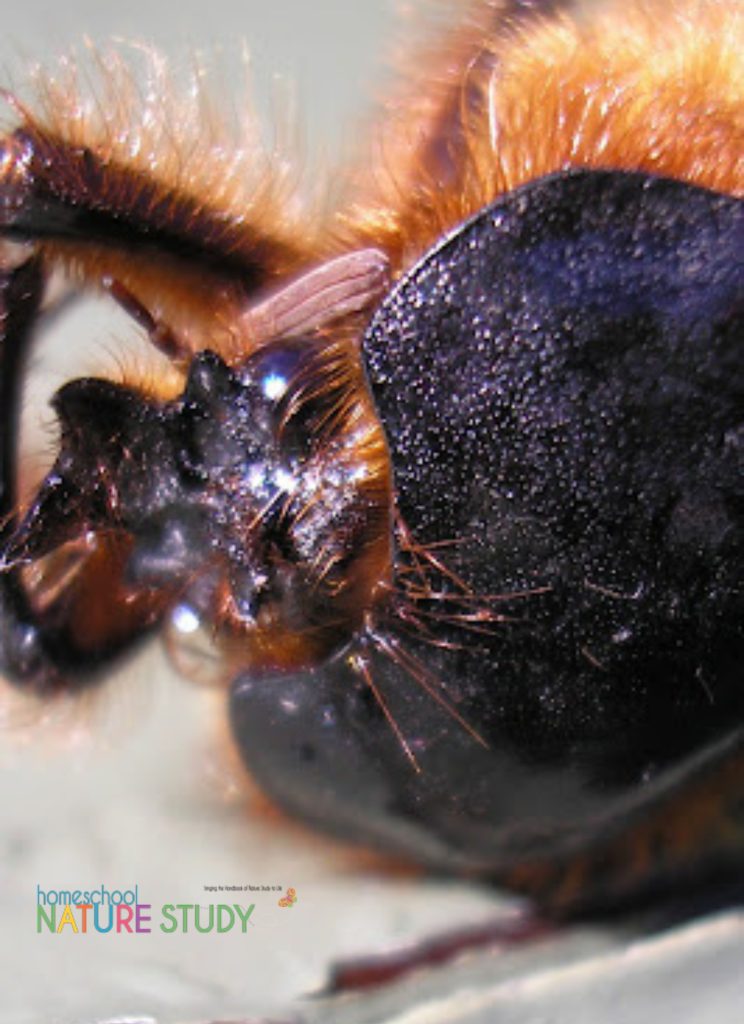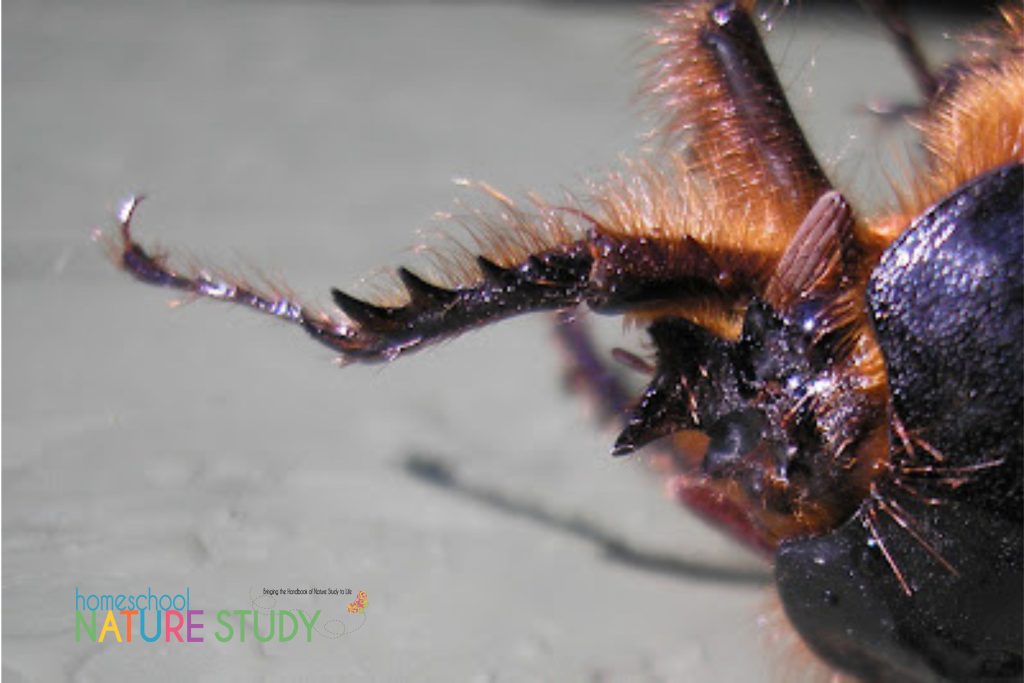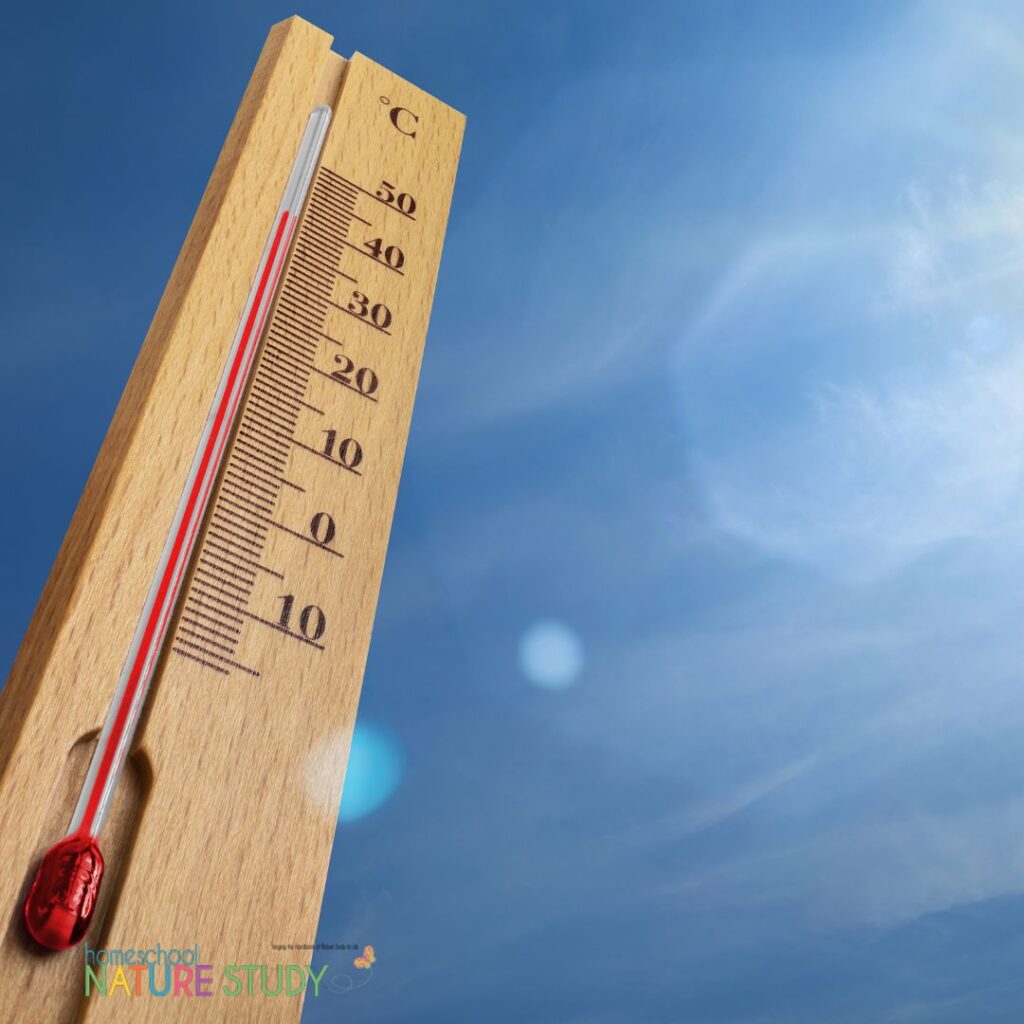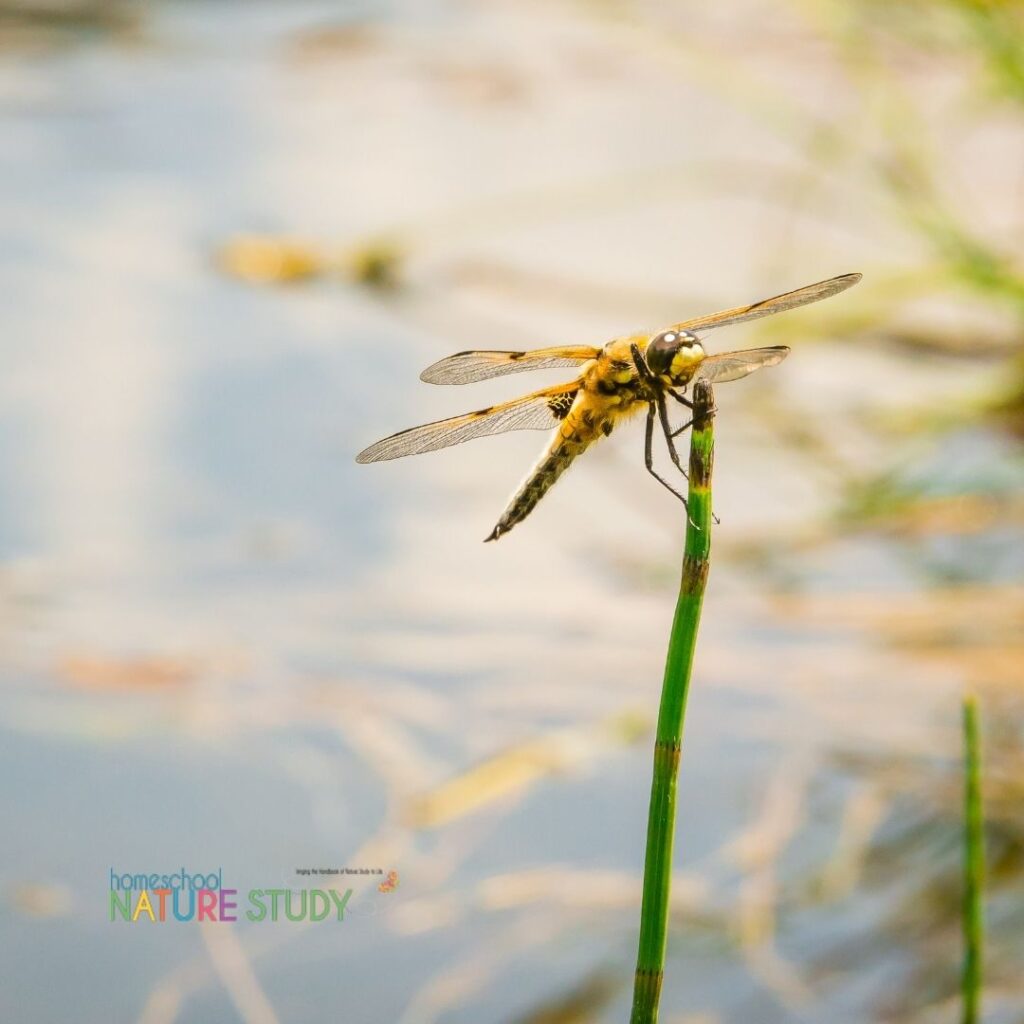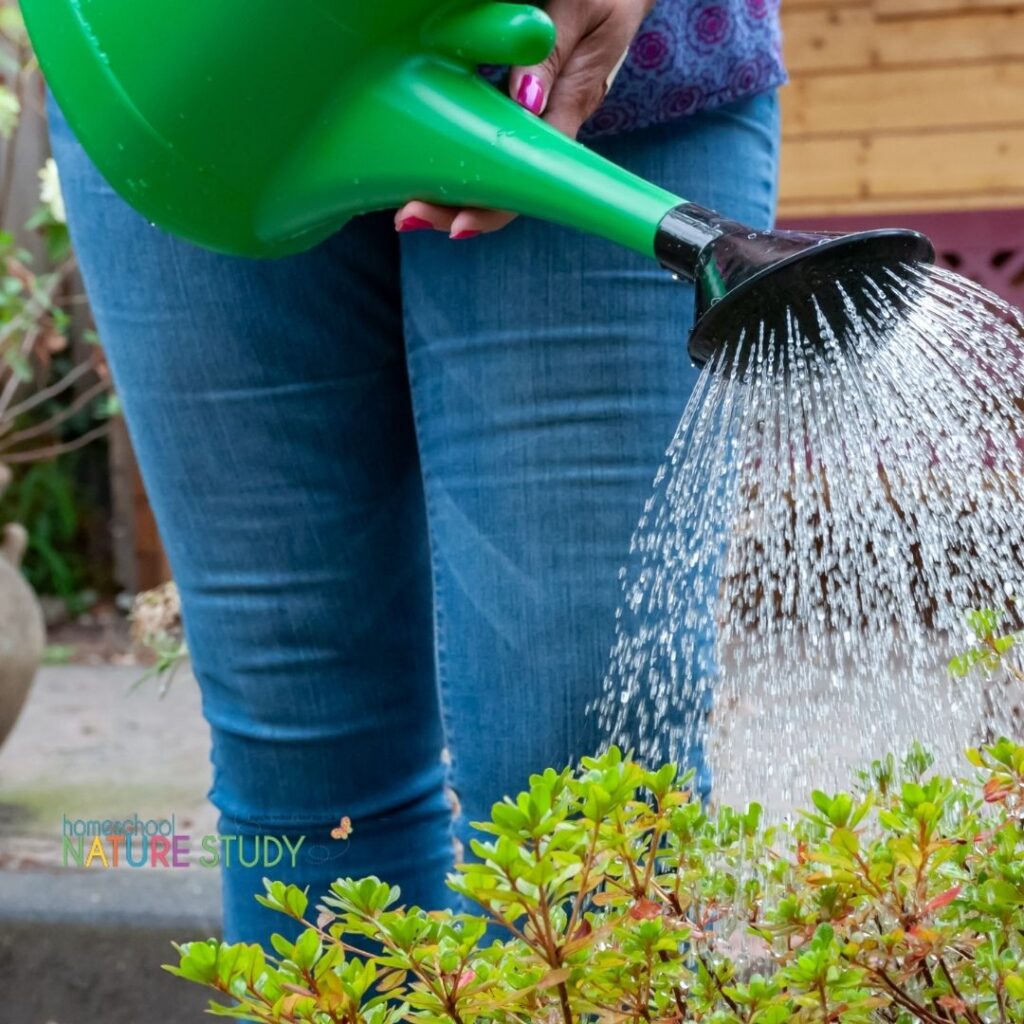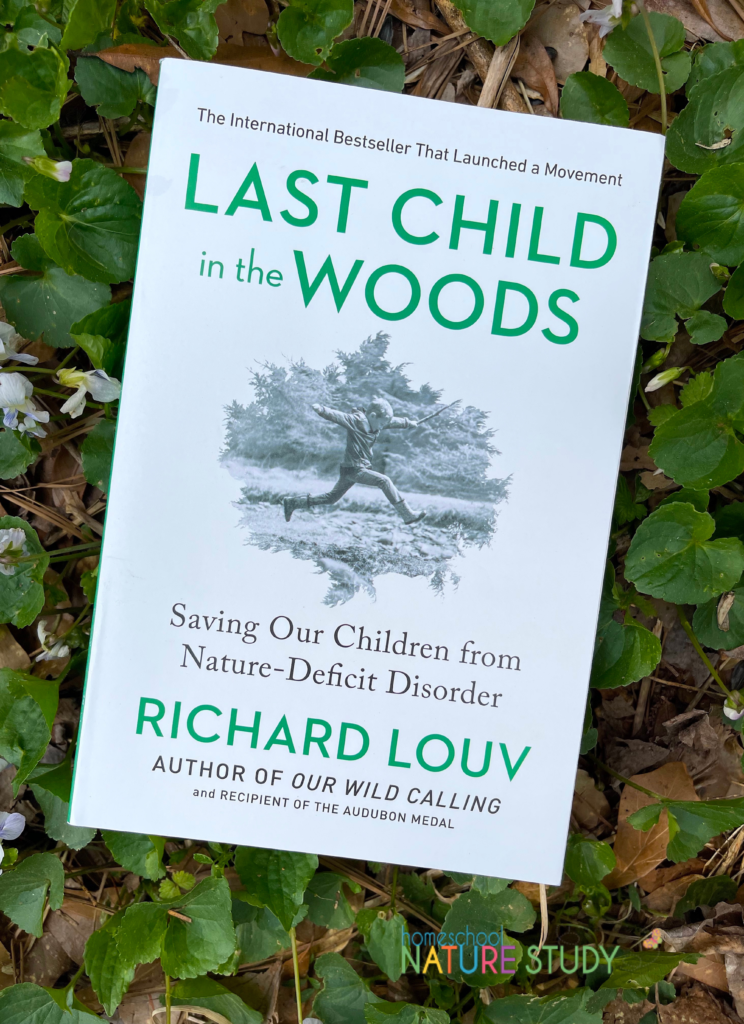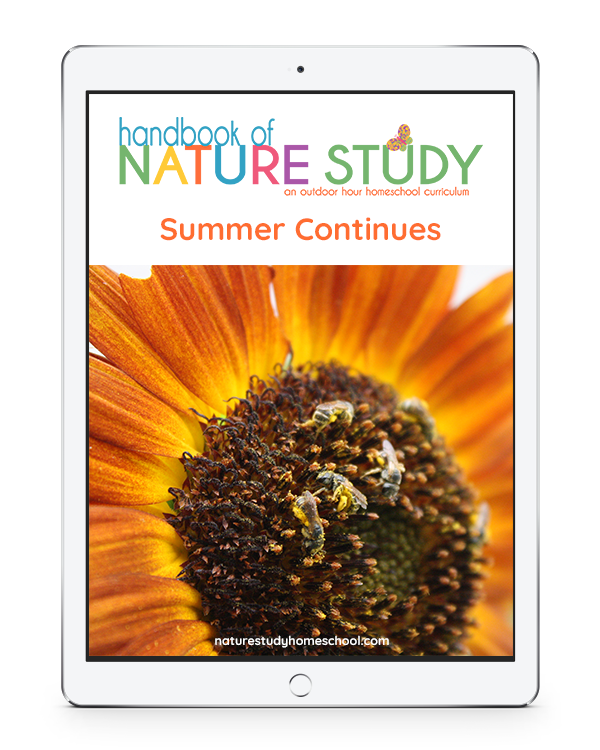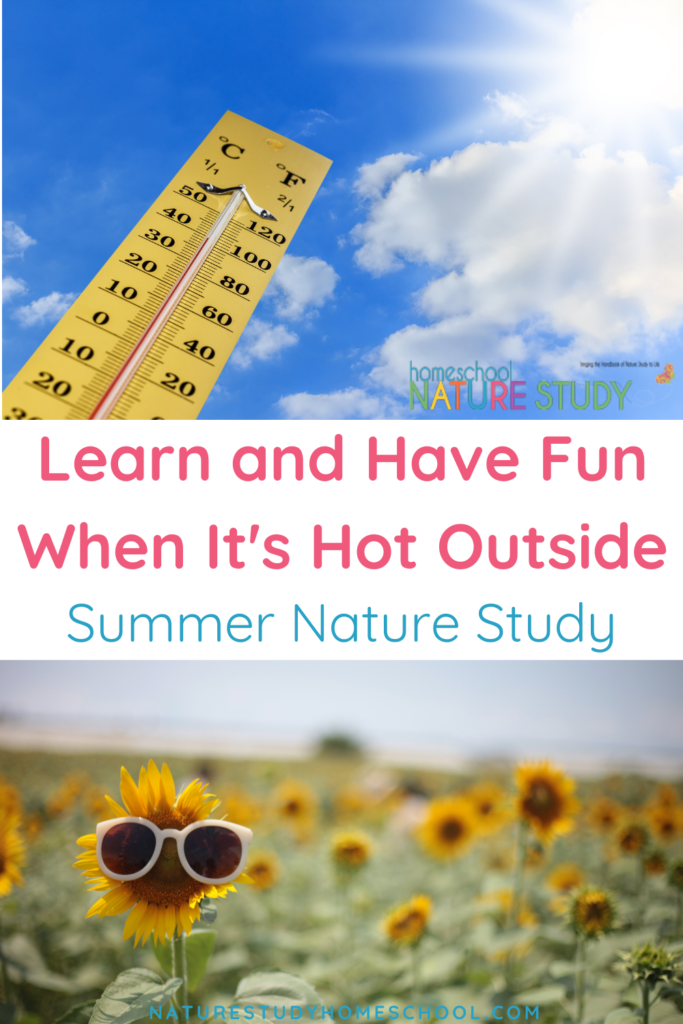These homeschool garden activities are perfect for your May nature studies. Includes outdoor activities and gardening tips for kids.
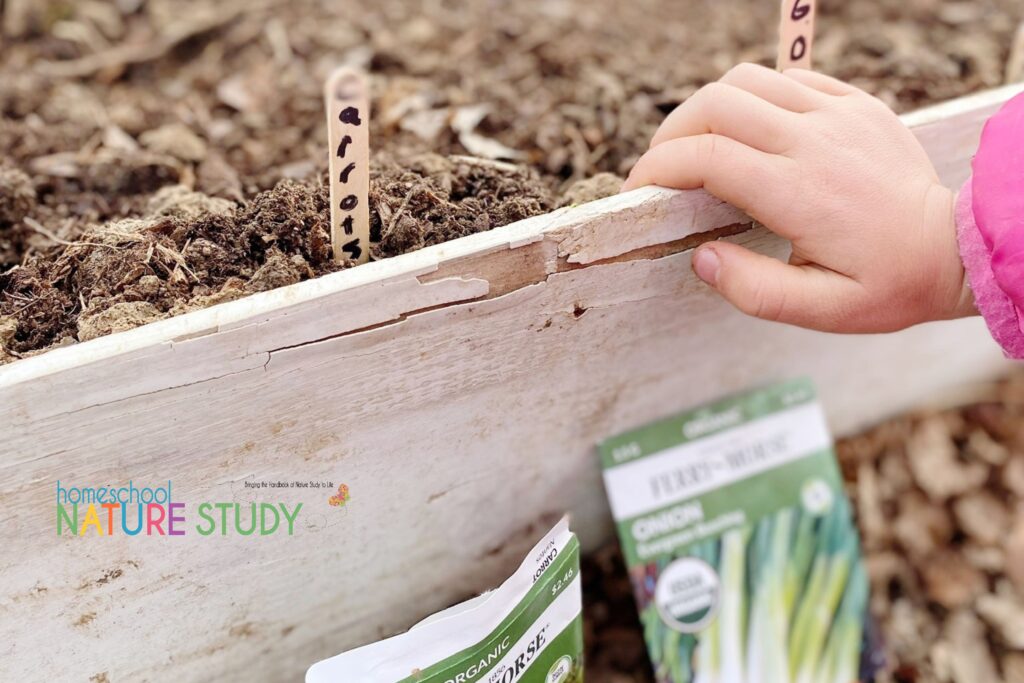
Nature Study Encouragement for Your Outdoor Hour Family Time
Before you begin homeschool garden activities, enjoy these ideas for getting outdoors with your family.
Nature Study in Ripples: Simple Ways to Study Nature
Simple Ways to Study Nature – Here are some simple ways to study nature in your homeschool. Start in your own yard then let your discoveries grow out like ripples in a pond.
“Nature study is, despite all discussions and perversions, a study of nature; it consists of simple, truthful observations that may, like beads on a string, finally be threaded upon the understanding and thus held together as a logical and harmonious whole.”
Handbook of Nature Study, page 1
99 Homeschool Nature Study Ideas to Get Your Family Outside
Be inspired with 99 homeschool nature study ideas and outdoors sorts of things! Make a list of your own and get outdoors!
Homeschool Garden Activities Perfect for May Nature Studies
“A child who makes a garden, and then becomes intimate with the plants he cultivates, and comes to understand the interrelation of the various forms of life which he finds in his garden, has progressed far in the fundamental knowledge of nature’s ways as well as in a practical knowledge of agriculture.”
Handbook of Nature Study, page 20 in the section “Gardening and nature Study”
Here are some great nature study ideas for your May homeschool!

Garden and Wildflower Nature Studies with the Outdoor Hour Challenges
You can enjoy a simple garden and wildflowers homeschool nature study with these resources we have gathered for you to use in your own backyard. It is such a delight to study and learn about a garden and the beauty of wildflowers!
Make a Wagon Garden
For this particular garden, I have a rusty old Red Flyer wagon that has wheels that no longer turn…How to Make a Wagon Garden.

World Turtle Day Nature Activities
Turtle Nature Study for Your Homeschool – Learn about pond life, pondweed and a pond habitat with this fun turtle nature study for your homeschool. Includes activities for learning about tortoises and microscopic pond life too.
Mammals: Goat Nature Study
This goat homeschool nature study is packed with fun from fainting goats to advanced mammal studies! Bring the Handbook of Nature Study to Life in your homeschool! Here’s a peek at what you can expect to enjoy in this Outdoor Hour Challenge for Homeschool Nature Study members.
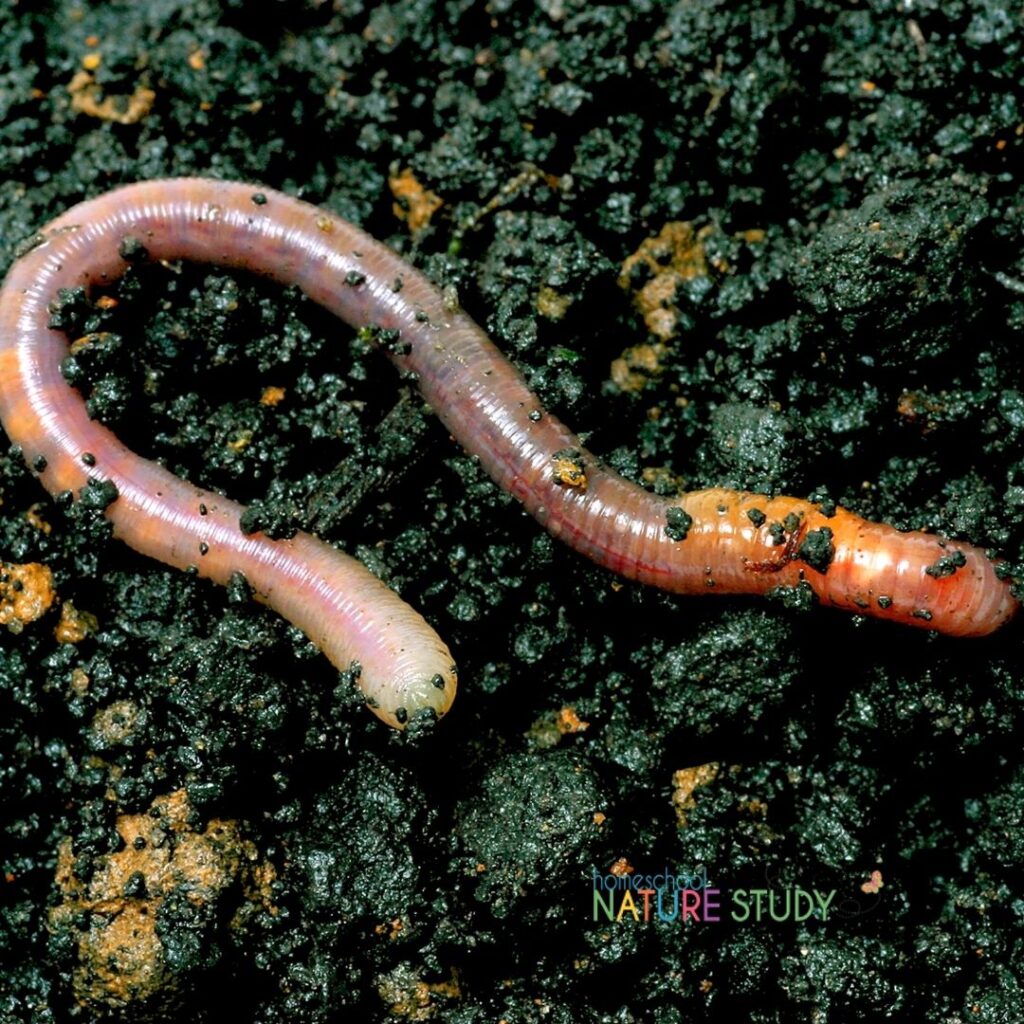
Earthworms Invertebrates Nature Study
This earthworm homeschool nature study is packed with great learning for all ages and even includes advanced invertebrate studies!
Butterfly Nature Study: How to Make a Butterfly Puddle
Over the years, I’ve observed butterflies along hiking trails in the muddy edges. There will sometimes be 10 or 12 butterflies sitting on the mud slowly opening and closing their wings. This behavior fascinated me! After a little research on the internet, I discovered that butterflies are attracted to mud puddles for not only the moisture but the minerals and salts that are present in the mud. Learn How to Make a Butterfly Puddle!

Homeschool Garden Activities: The Great Sunflower Project
What is the Great Sunflower Project? This is a citizen science activity that you can participate in with your children. If you can grow a sunflower (or selected other flowers), you can join the project with just a few minutes invested later this summer.
Beautiful Queen Anne’s Lace Wildflower Nature Study
Our family made great memories together one year while noticing and studying Queen Anne’s lace throughout the seasons. Enjoy this beautiful Queen Anne’s lace nature study for your homeschool and see what you notice in each season too!
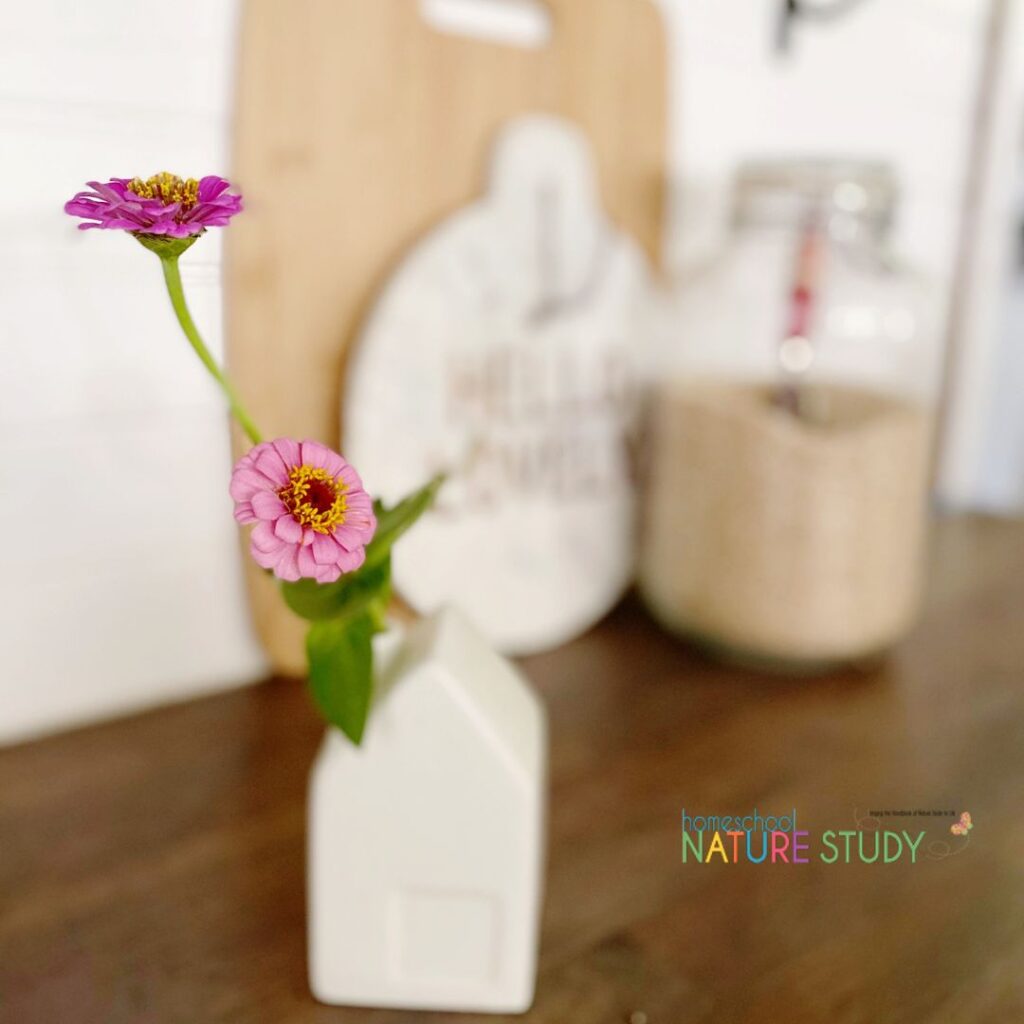
Charlotte Mason Nature Study: Simple Ideas for Wildflowers
These timeless Charlotte Mason nature study ideas are as relevant today as when they were written and I’m forever grateful for the encouragement these gave me when I was a new homeschooler.
Gathering Things for Your Nature Table
Unsure of what a nature table is exactly? Here is a simple definition with some ideas and tips. These will help you begin the habit of gathering things for your homeschool nature table during your Outdoor Hour Challenge time.

Plan a Picnic
You can plan a simple outdoor picnic with the benefit of homeschool nature study! Even a snack in your backyard will make for a fun time together outdoors. You will be surprised at all you notice while you are outside.

The Ultimate Guide to National Parks Nature Study
Ready to enjoy a trip to a national park? Use this guide to national parks nature study for your homeschool and enjoy nature study learning while you explore the great outdoors!
More Homeschool Garden Learning
Gardening in Your Homeschool – As the plant world comes alive again in springtime, what better way to teach our children about nature, food, hands-on history, and practical skills than by gardening? Whether we do a formal study or make gardening a purely hands-on project, our children will learn with a homeschool garden.
Get Them Gardening! Fun Garden Books for Kids – As spring starts to roll in, we turn our thoughts to finally getting outside and enjoying the nice weather. Along with this comes budding trees and growing plants, and gardening both for food and flowers. This collection of garden books for kids will help you include gardening in your homeschool.
Mother’s Day Garden activities – Paint some garden flowers for a lovely Mother’s Day gift!
12 Delightful Farm Activities for Kids – These 12 delightful farm art activities for kids include fluffy baby chicks, a tractor, a barn, ducklings, a lamb, a cow, a piglet and even the chicken life cycle. Such fun learning for your homeschool!

More Nature Study Ideas for Your May Homeschool
Out of School and Into Nature: The Anna Comstock Story – Out of School and Into Nature: The Anna Comstock Story is a beautiful picture book biography about the author of The Handbook of Nature Study. Anna Botsford Comstock was passionate about children getting out of the classroom and into nature to learn first hand about our beautiful world.
3 Tips for Nature Journaling When You Think You Can’t Sketch – Here is some encouragement for you with 3 tips for nature journaling when you think you can’t sketch. My personal nature journal is a source of great joy and it gives me such pleasure to create pages that record my observations and memories of a particular day, excursion, or season.
How Nature Study Enriches Your High School Biology in Your Homeschool – Just how to include homeschool nature study as part of high school biology? Here you will find a break down of nature study suggestions and accompanying resources for each module of your homeschool biology lessons. I really think it depends on the family and how much nature study you have time to fit in with your high school age children.
You might also like to explore some May Homeschool Celebrations.
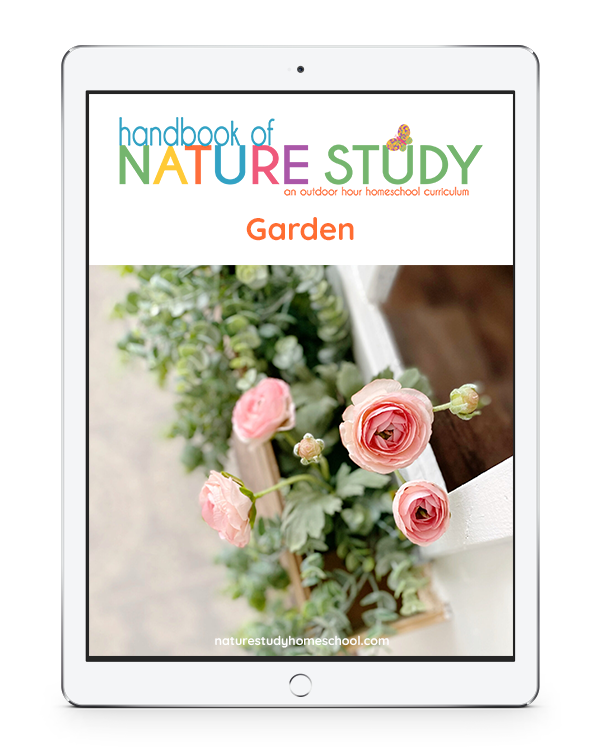
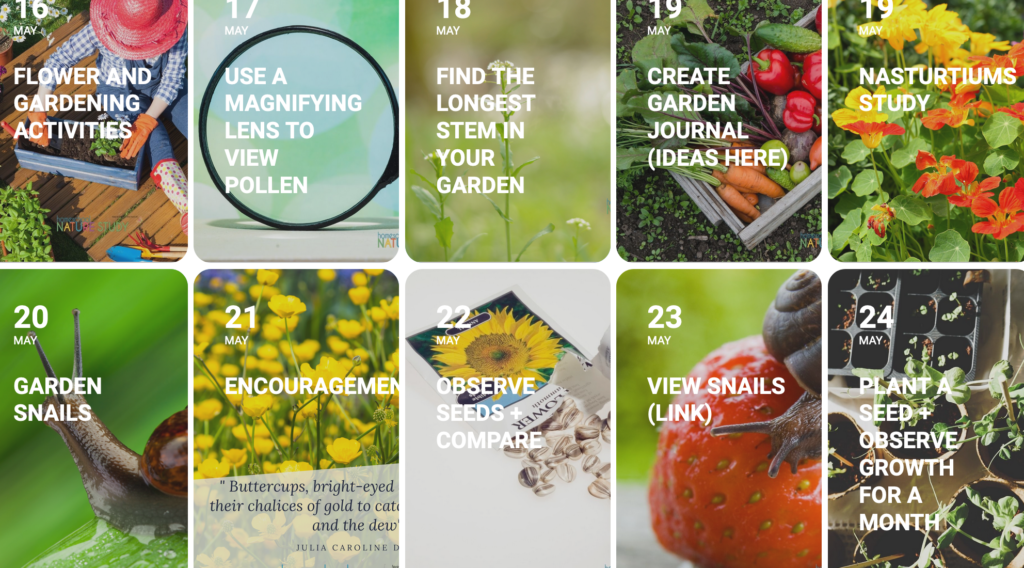
Garden Activities in Homeschool Nature Study Membership
Enjoy all of these and more in homeschool nature study membership:
- Garden Outdoor Hour Challenge Curriculum
- Herbs Outdoor Hour Challenge Curriculum (annual members)
- Flower and Gardening Activities and Notebook Pages
- Learning leaf parts
- Poppies and buttercups
- Ferns
- Looking for pollen
- Pressing flowers
- How to draw flowers
- Learning flower parts and dissection of flowers
- The garden snail
- Garden Seed Ideas
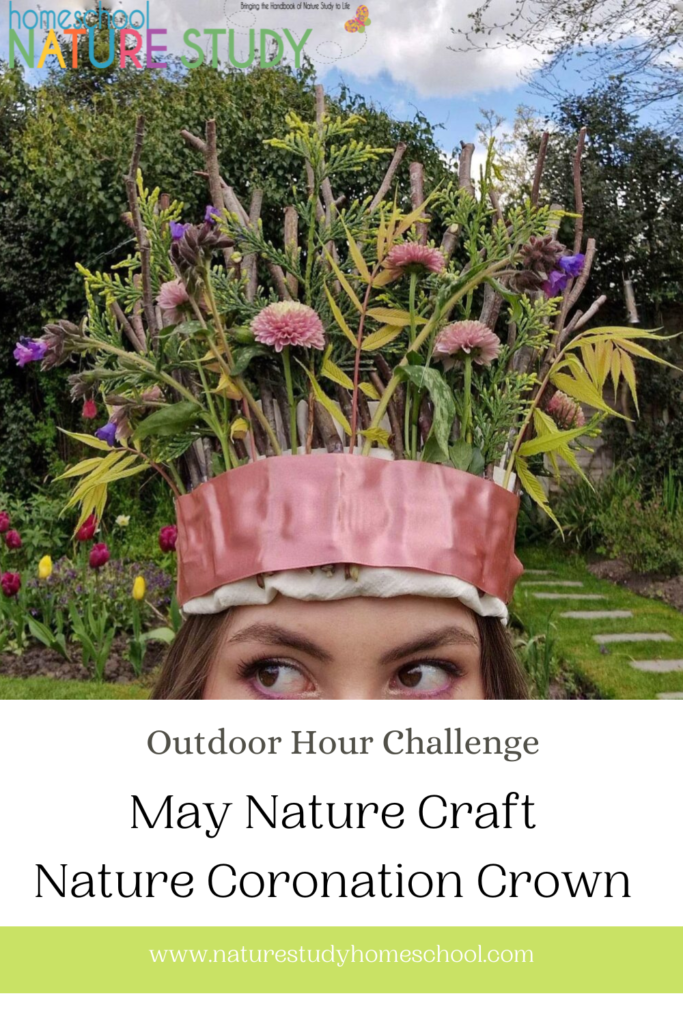
Coronation Crown Nature Craft for Annual Homeschool Nature Study Members
Victoria Vels shares, “May’s nature craft has landed for our lovely members and we’re feeling rather patriotic with these stunning Nature Coronation Crowns, just in time for the crowning of King Charles II.”
You will find hundreds of homeschool nature studies plus all the Outdoor Hour Challenges in our Homeschool Nature Study membership. There are 25+ continuing courses with matching Outdoor Hour curriculum that will bring the Handbook of Nature Study to life in your homeschool! In addition, there is an interactive monthly calendar with daily nature study prompt – all at your fingertips!

Outdoor Mom Encouragement for Annual Homeschool Nature Study Members
The Outdoor Mom in May Helps Us Refocus
Make it your ambition to lead a quiet life, to attend your own business and work with your hands –
1 Thessalonians 4:11
It reminds me to re-focus my goals and ambitions so that they align with God’s will rather than my own, often more worldly, ambitions.
This verse grounds me. When I put this verse into action in practical ways in my everyday life I find that life slows down and I have enough head space to allow my thoughts to centre on what is important.
The May Outdoor Mom includes:
- Choosing a journaling spot
- 10 (!) May nature prompts for outdoors, for journaling and for either the seashore or mountains
- Ideas for working with your hands
- Six ideas for making the ordinary extraordinary – including planting a kitchen garden!
Be inspired. Be encouraged. Get outdoors!
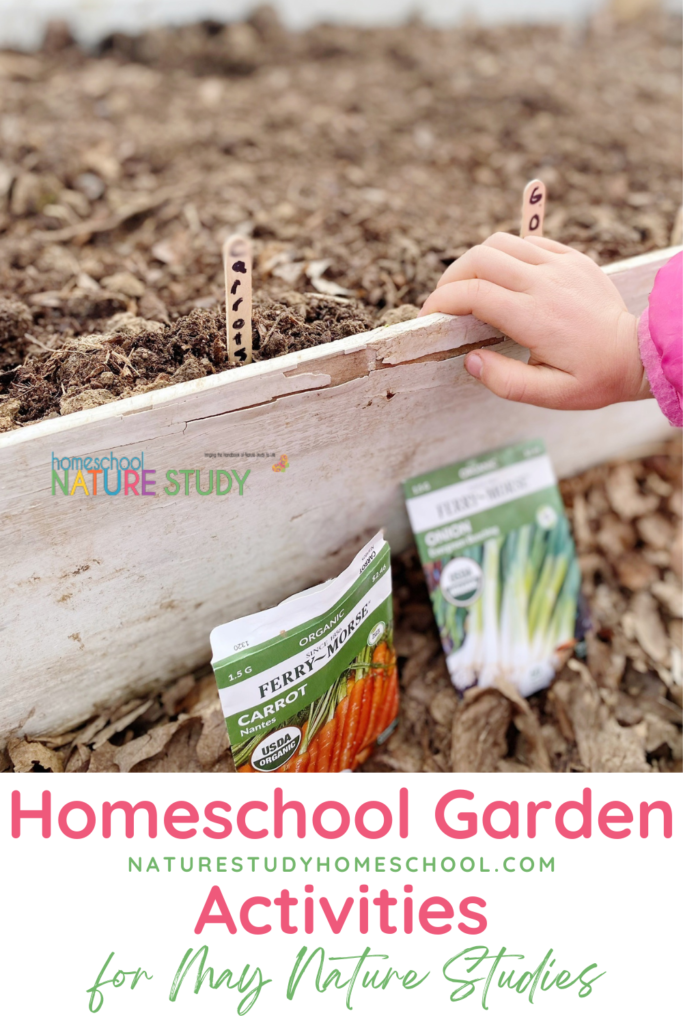
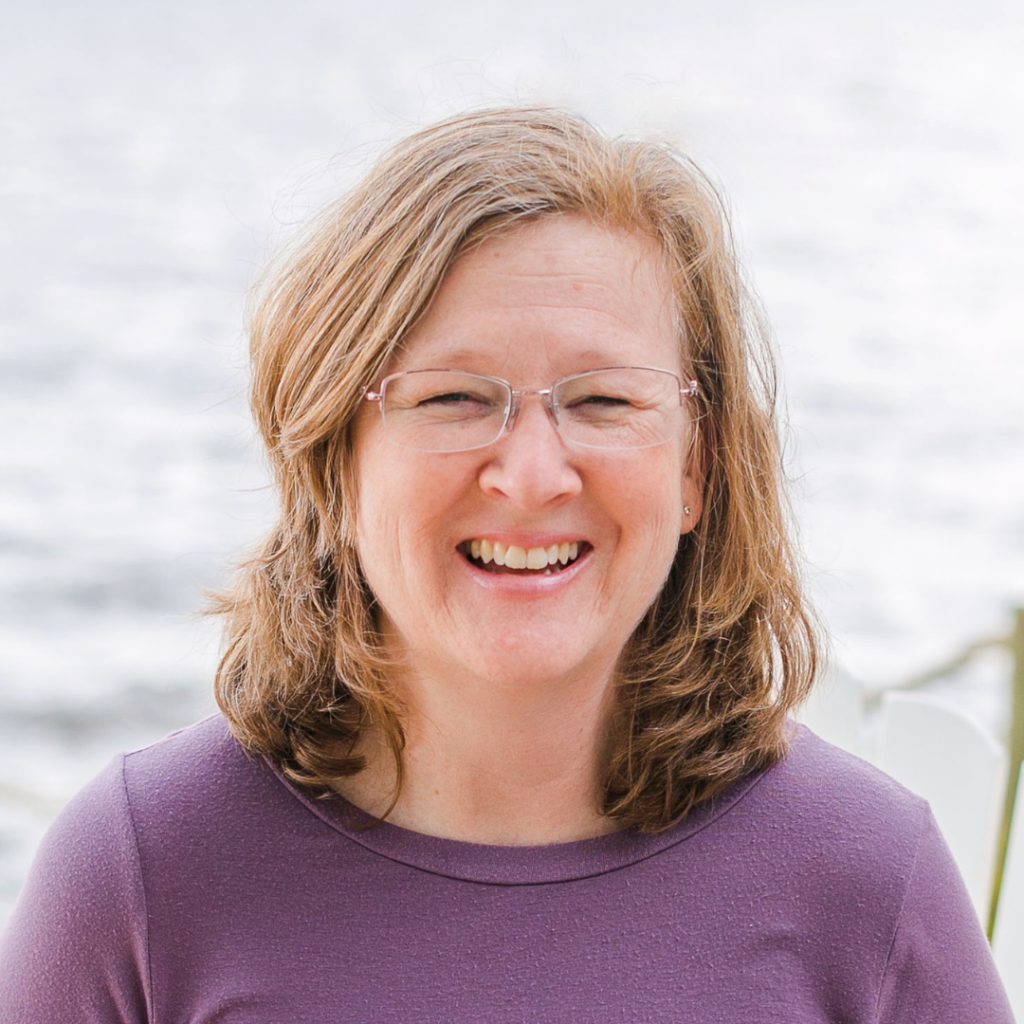
Tricia and her family fell in love with the Handbook of Nature Study and the accompanying Outdoor Hour Challenges early in their homeschooling. The simplicity and ease of the weekly outdoor hour challenges brought joy to their homeschool and opened their eyes to the world right out their own back door! She shares the art and heart of homeschooling at You ARE an ARTiST and Your Best Homeschool plus her favorite curricula at The Curriculum Choice.

